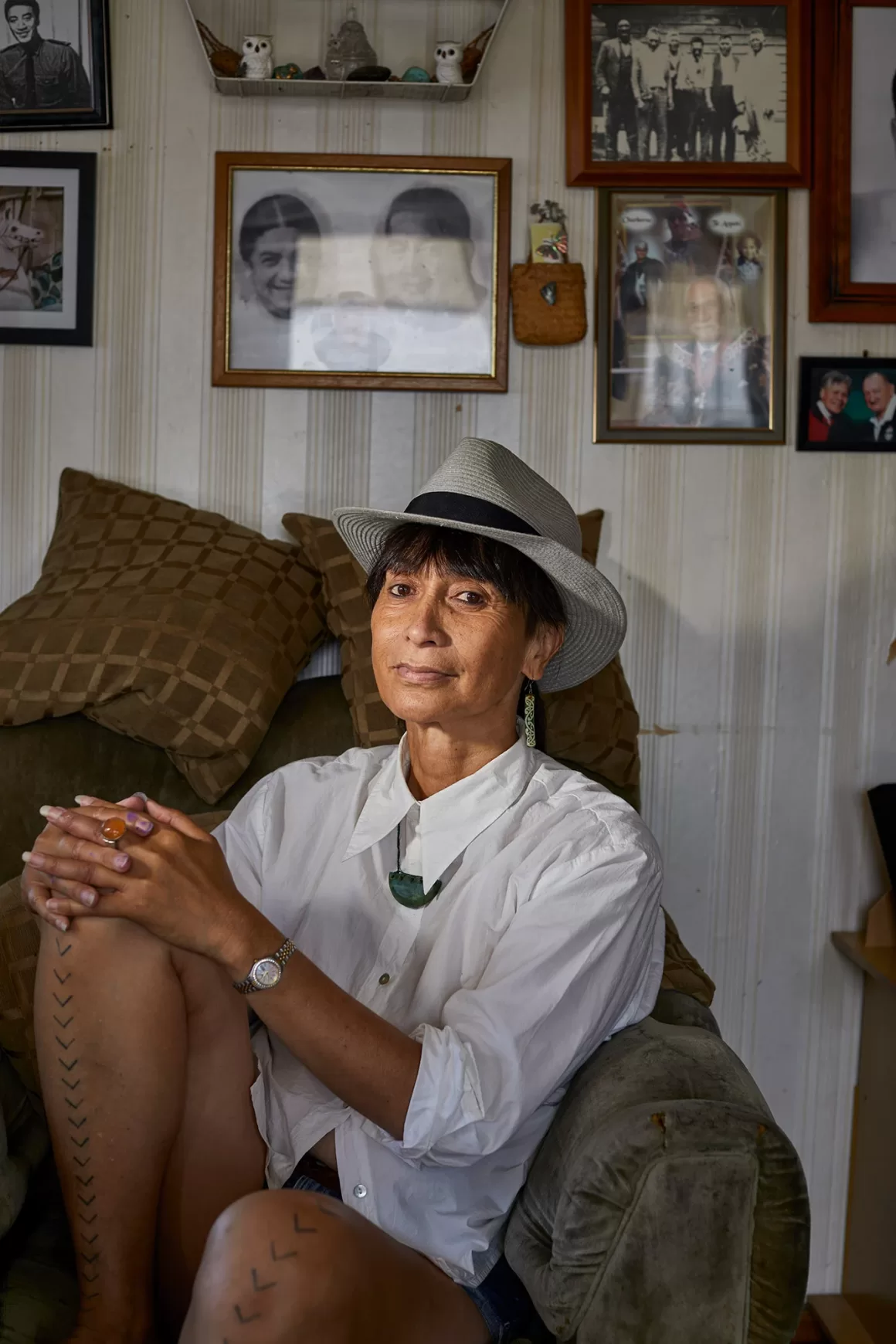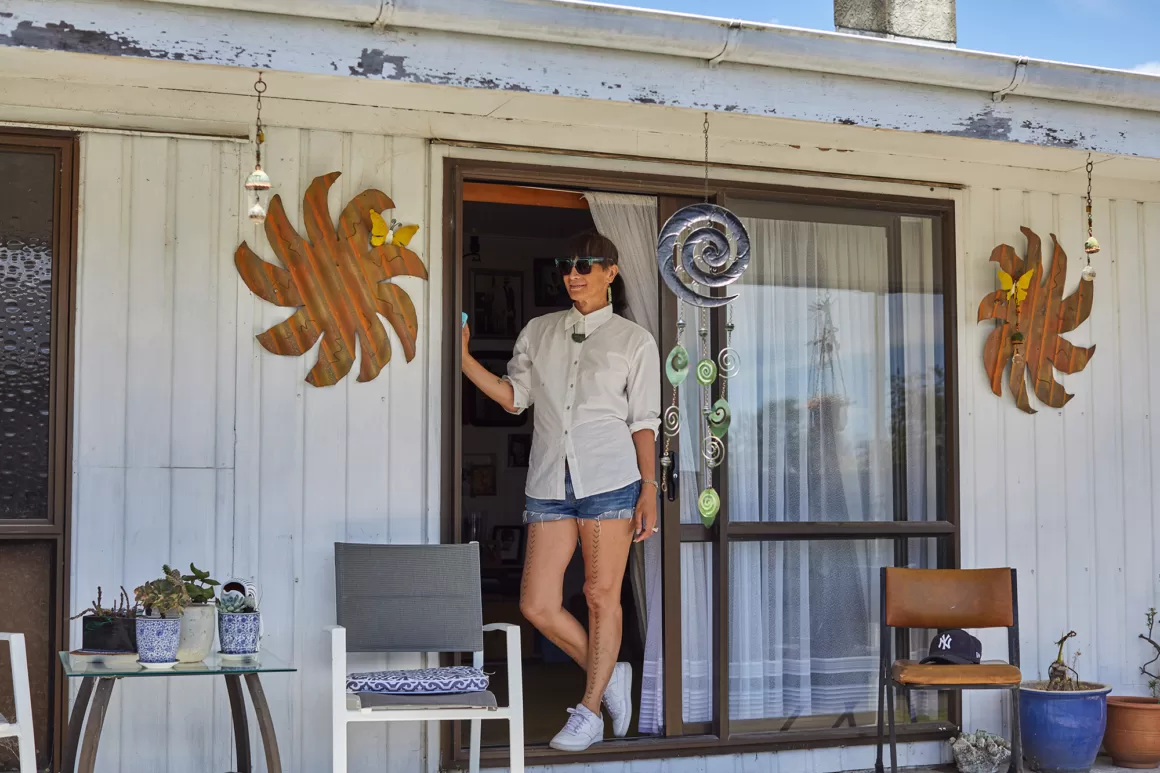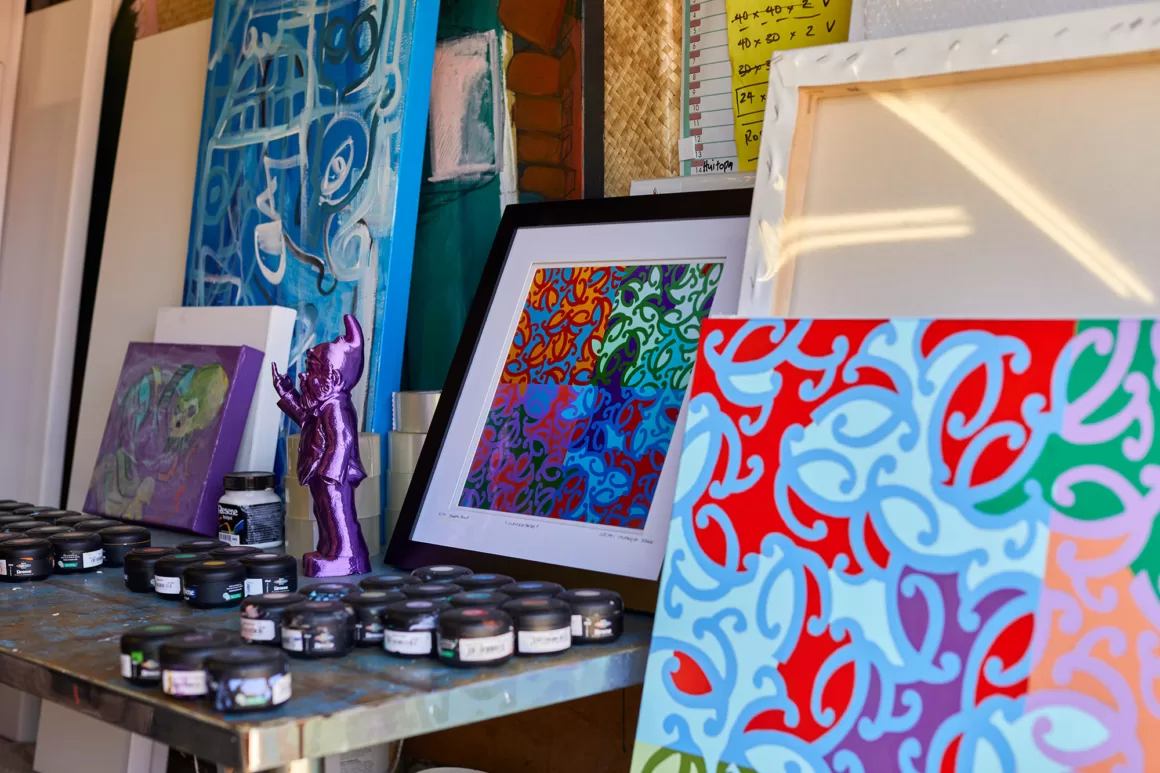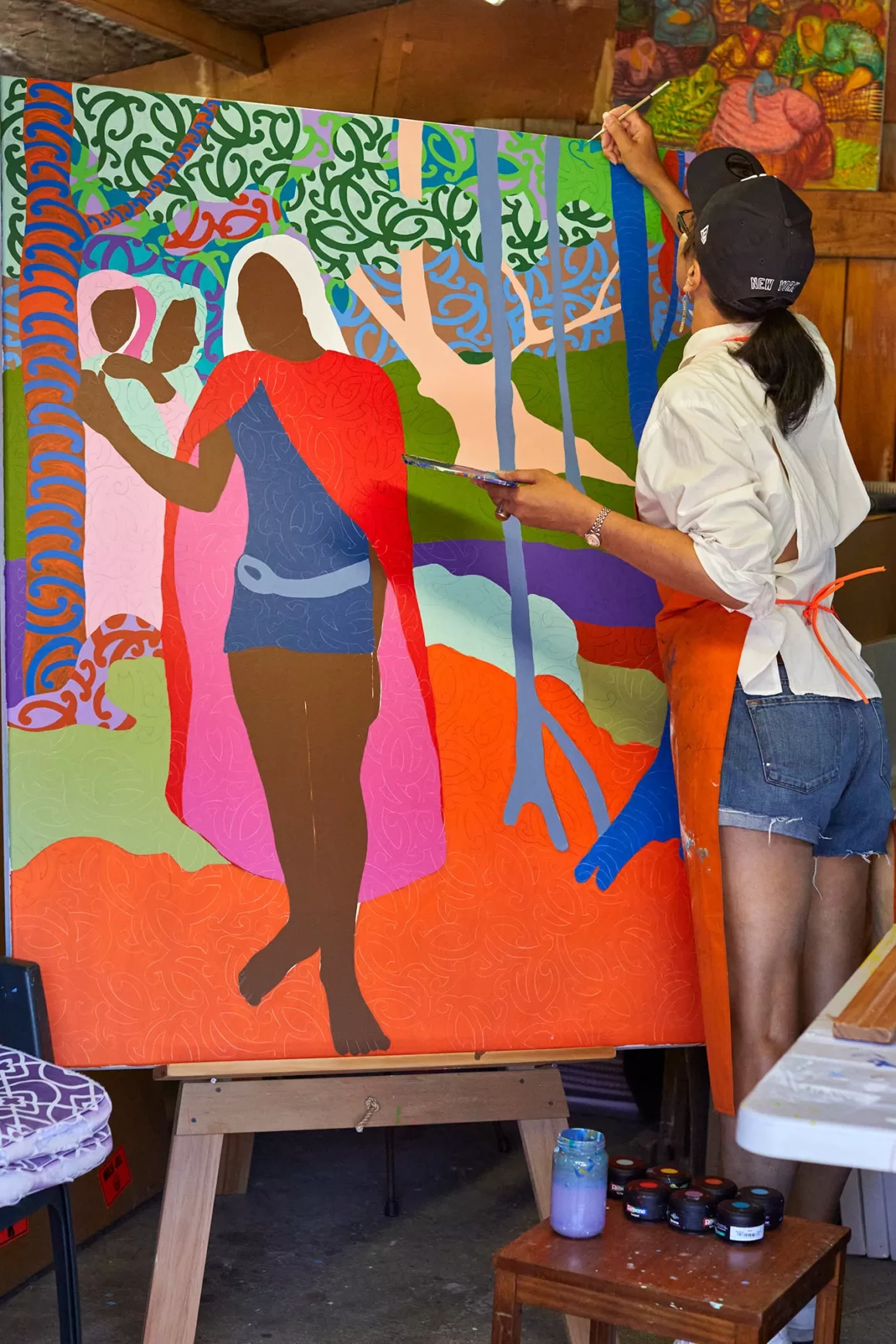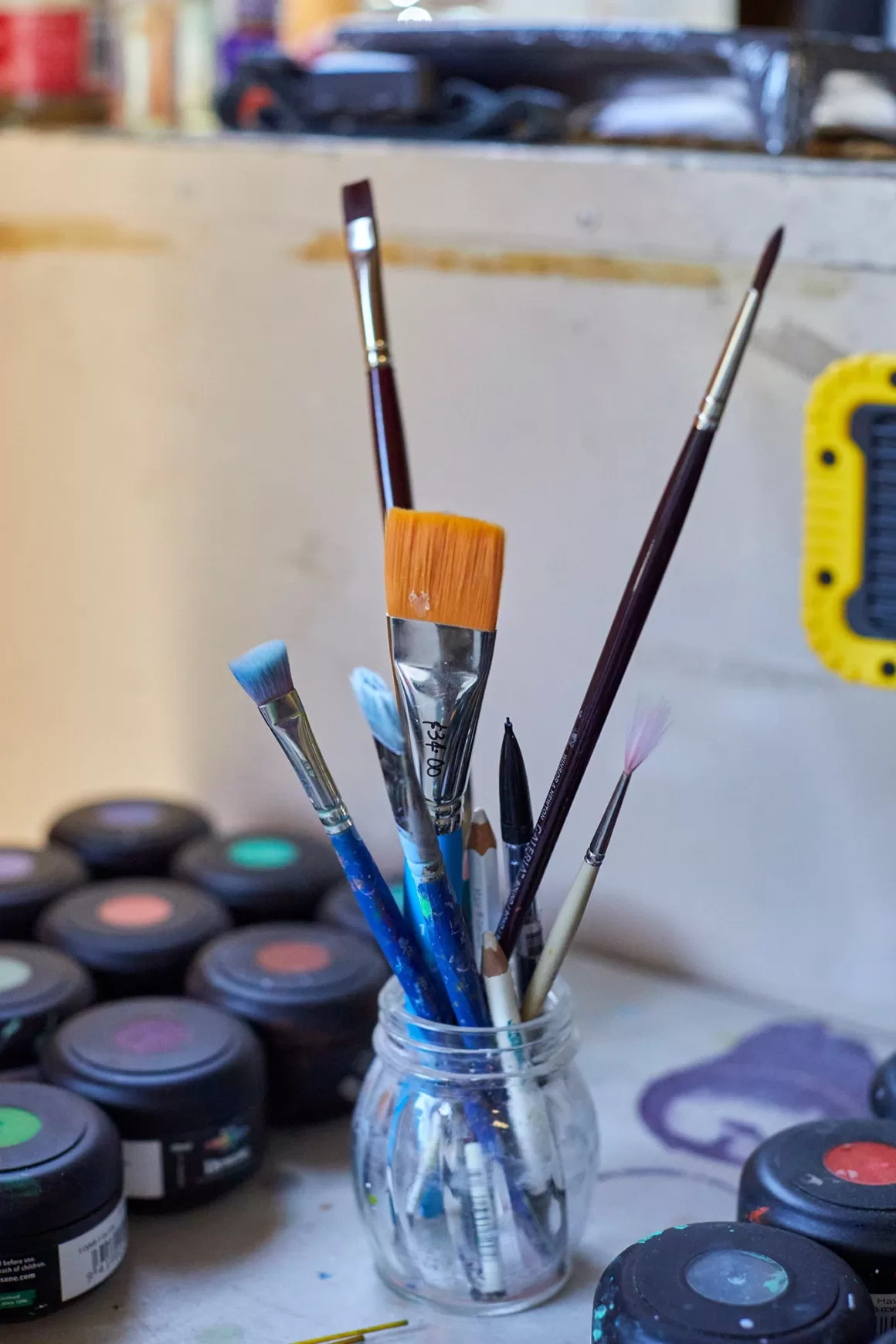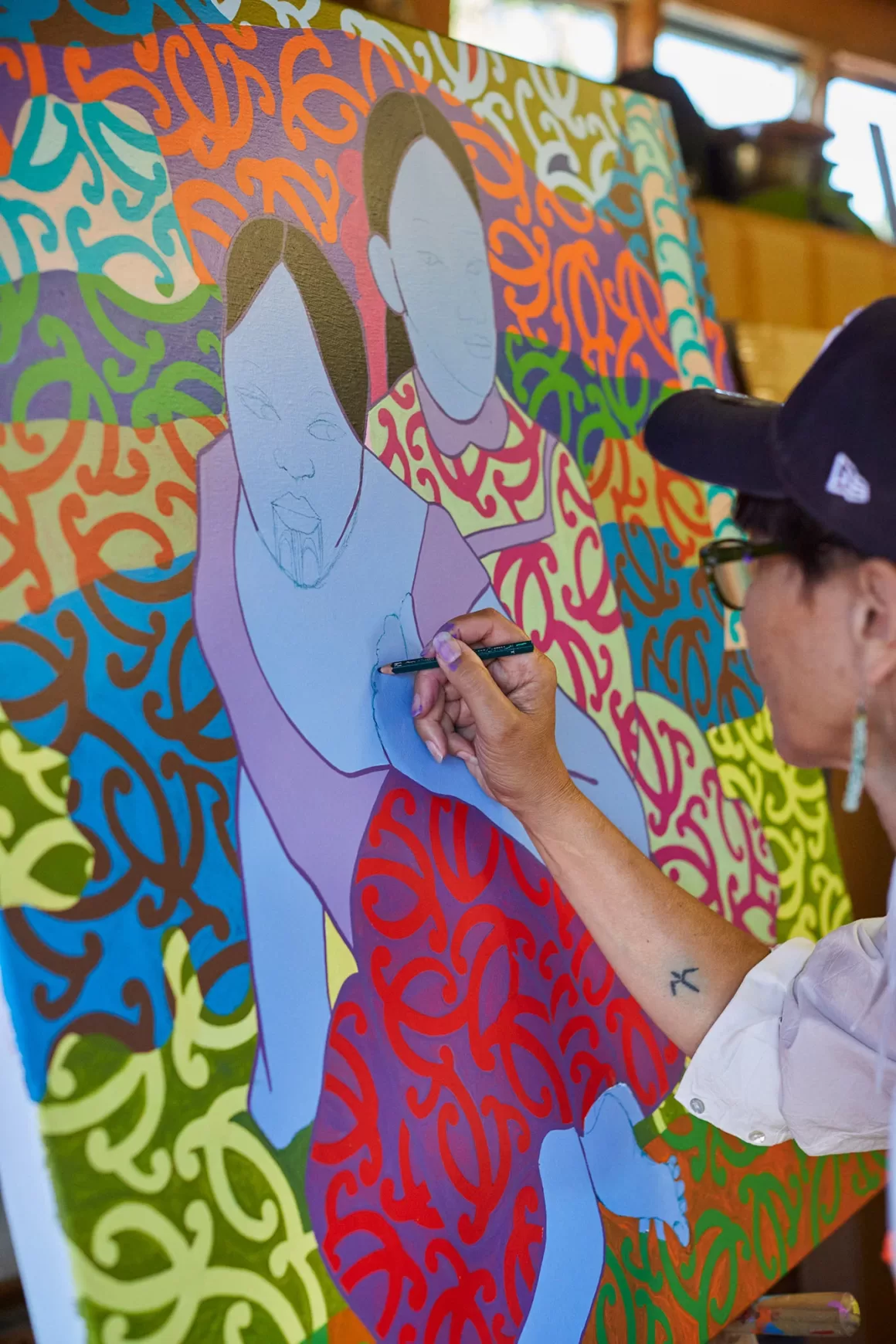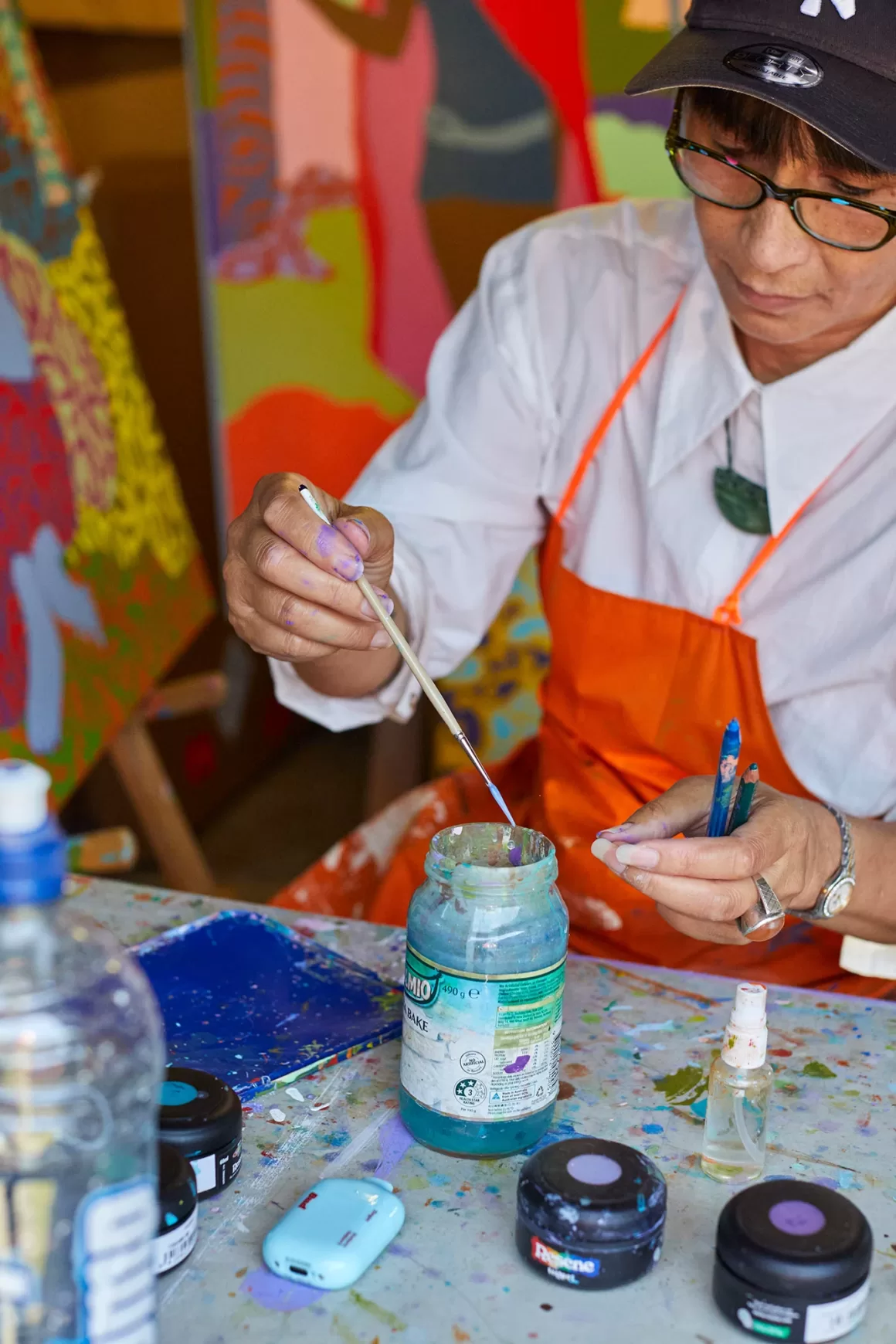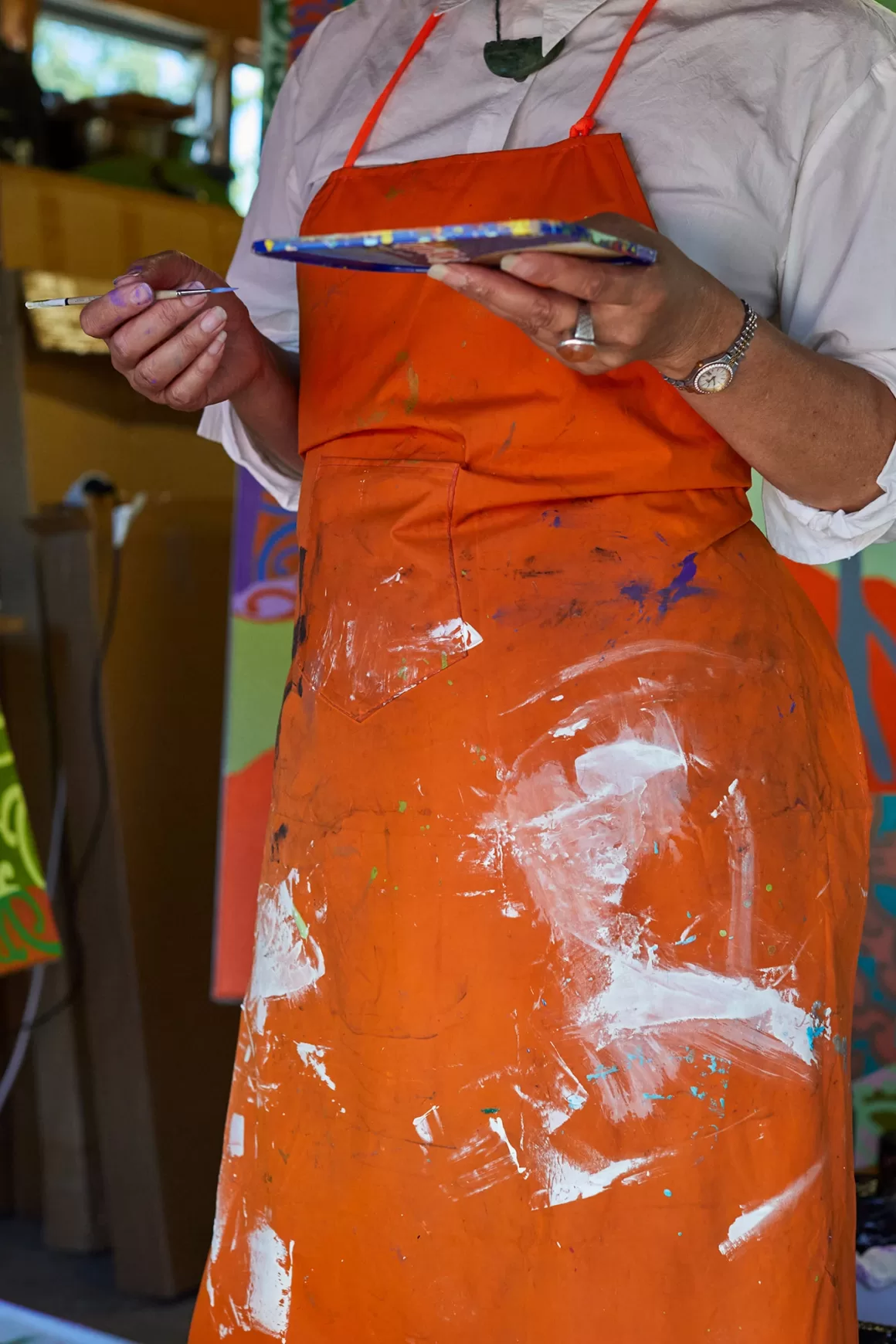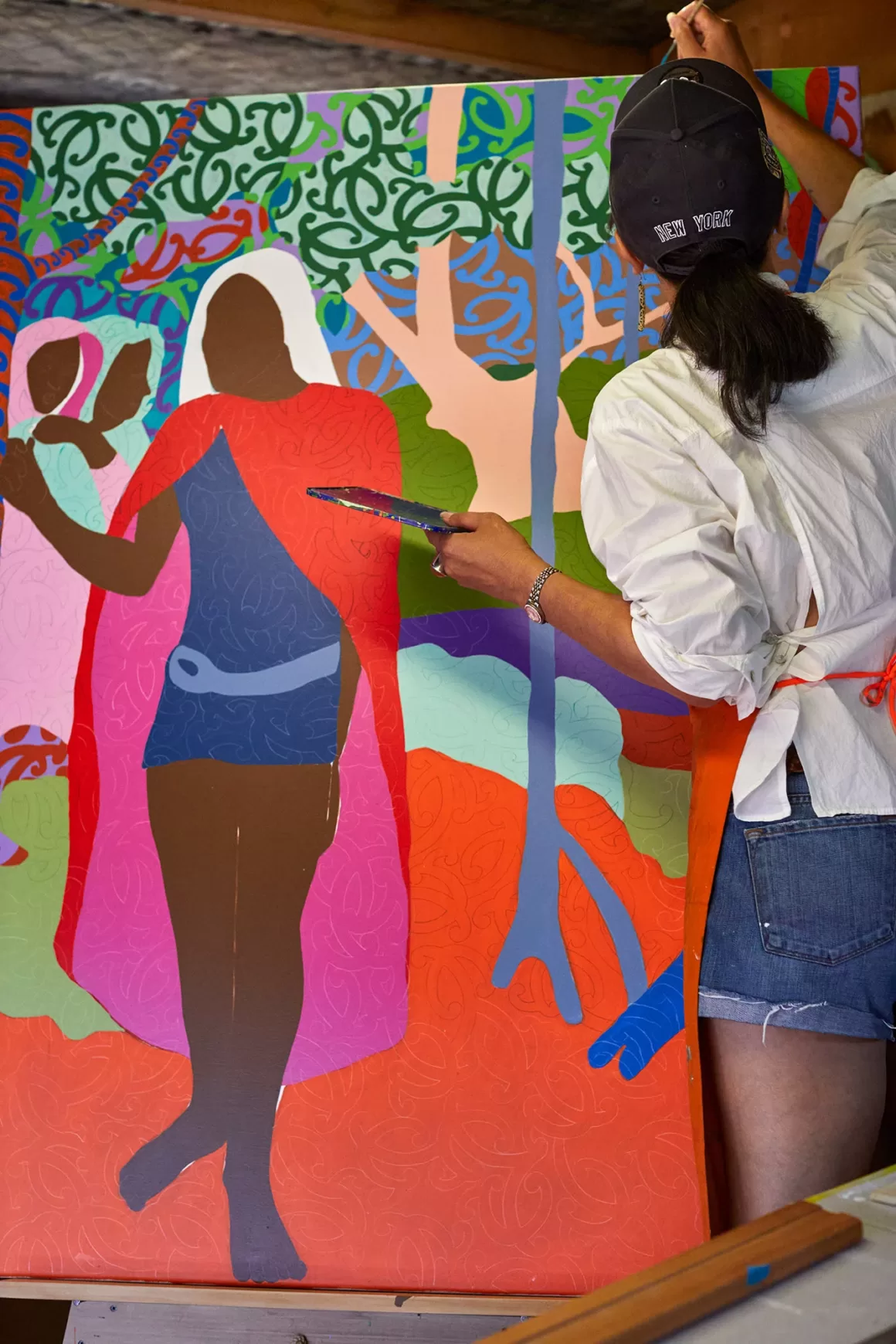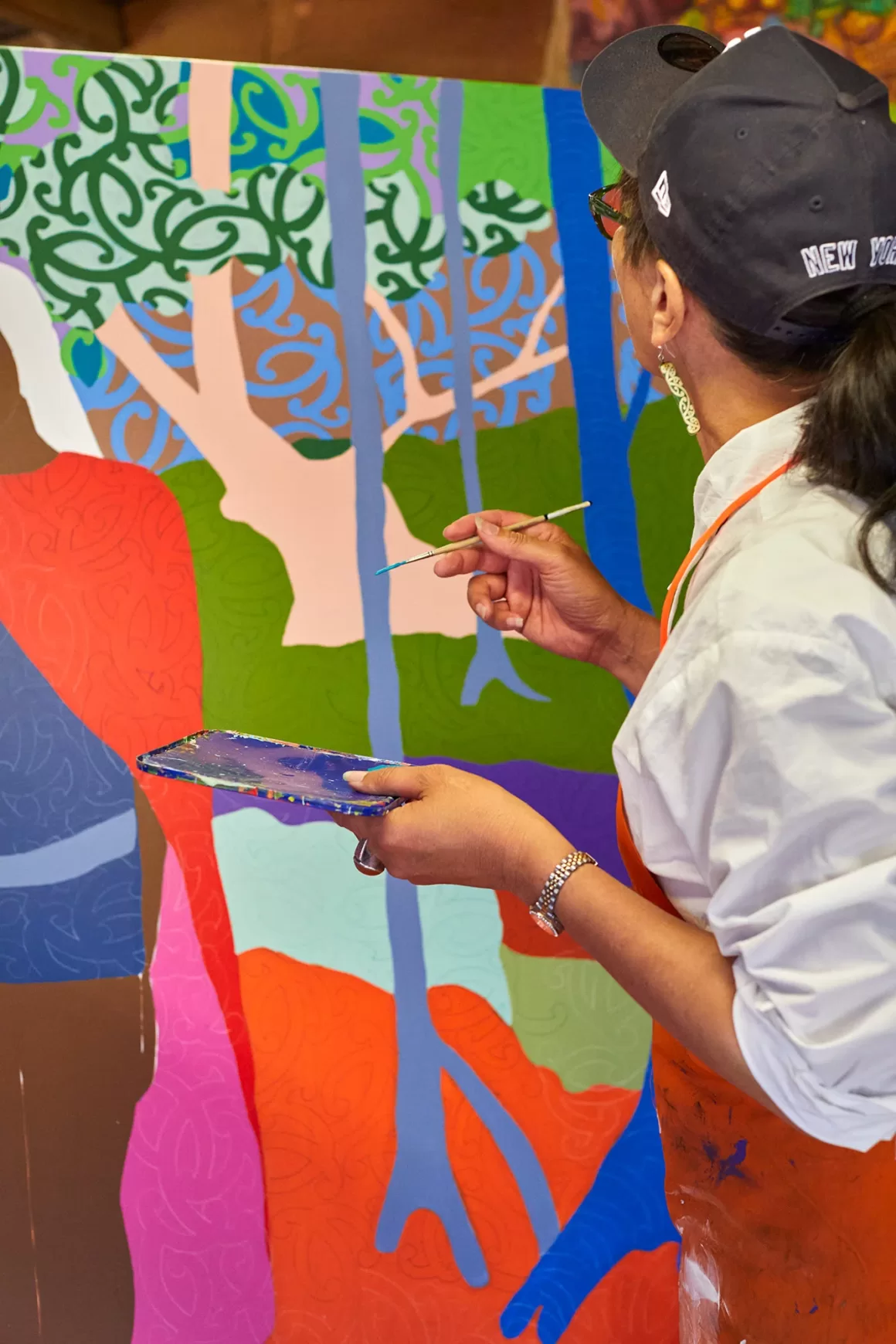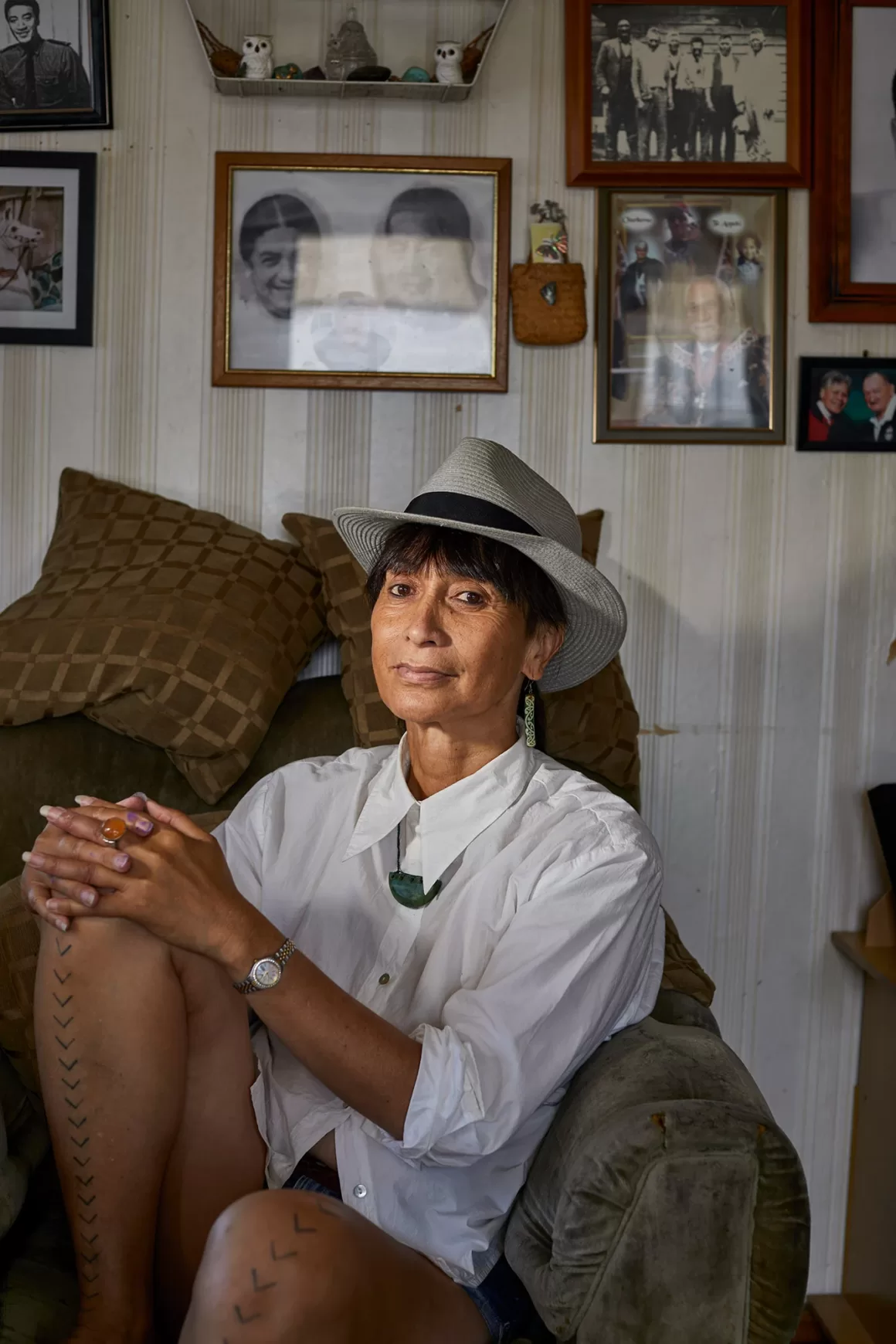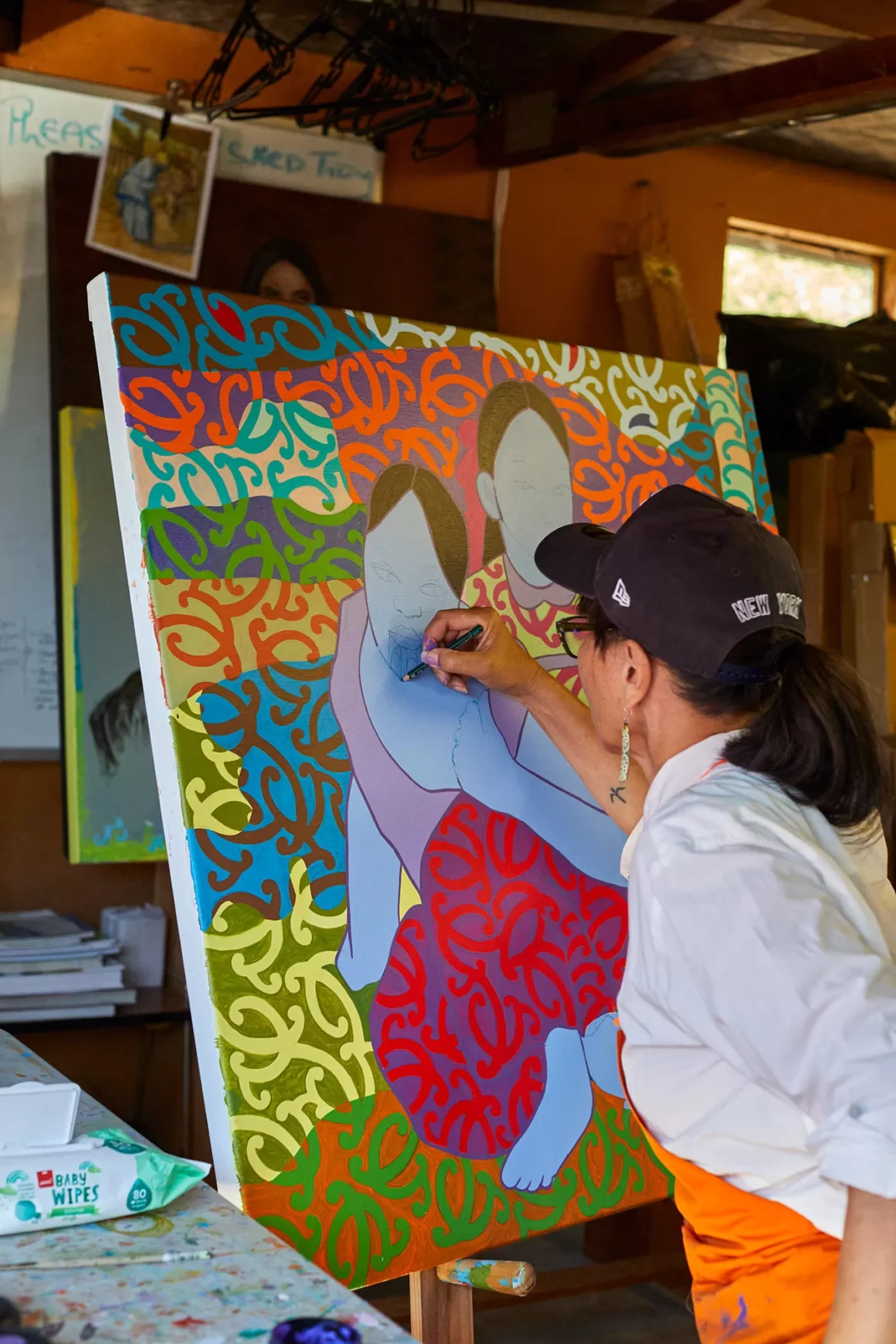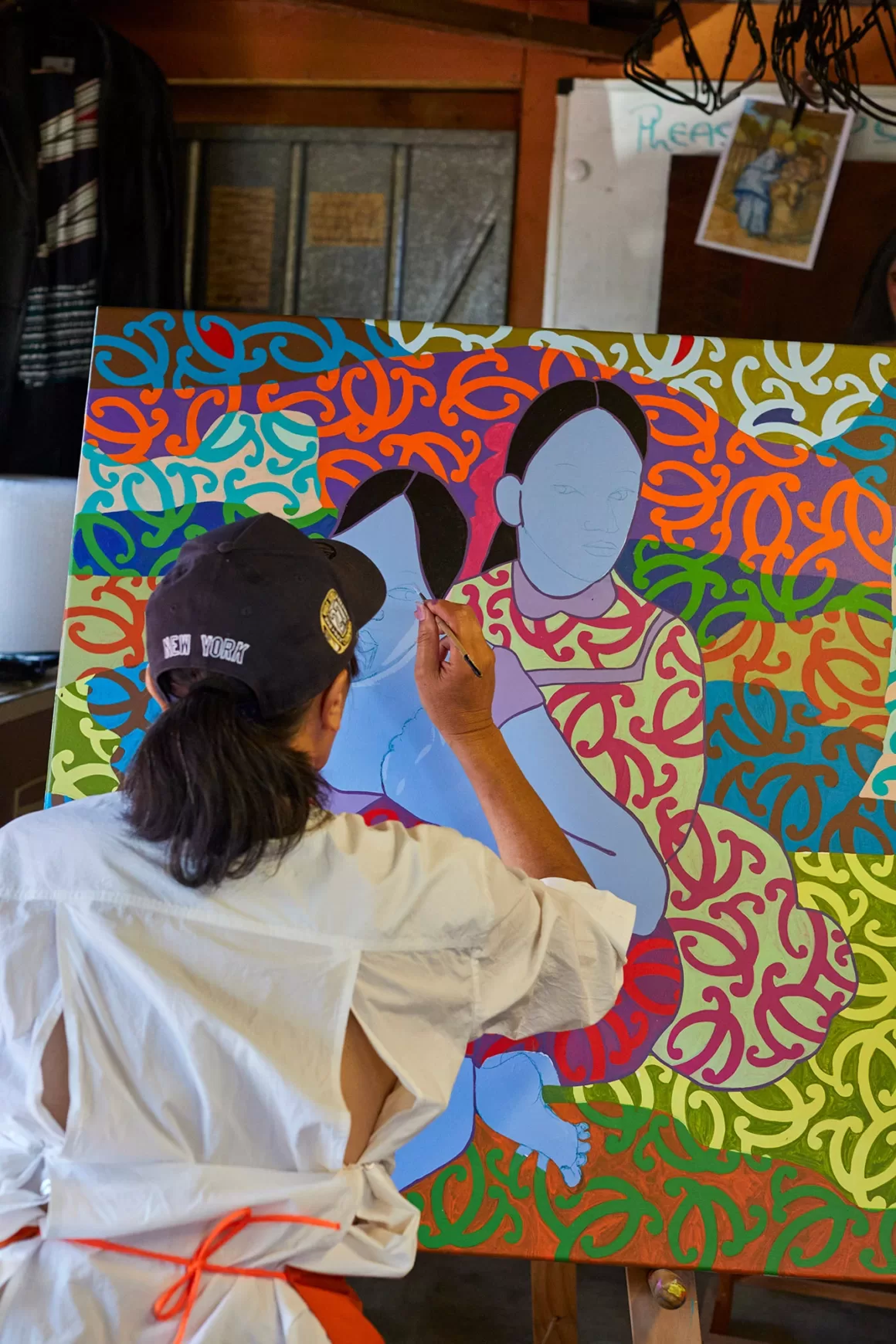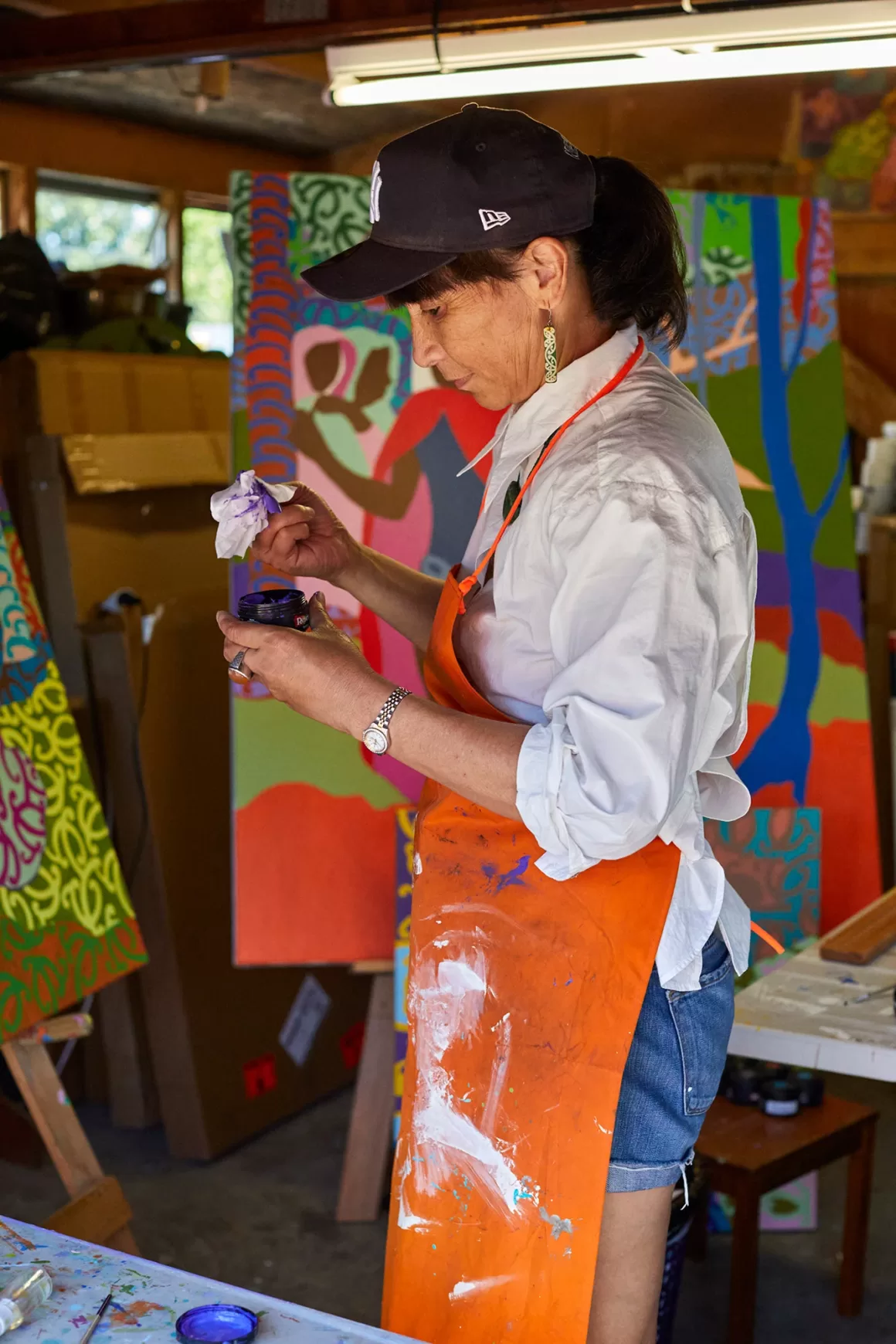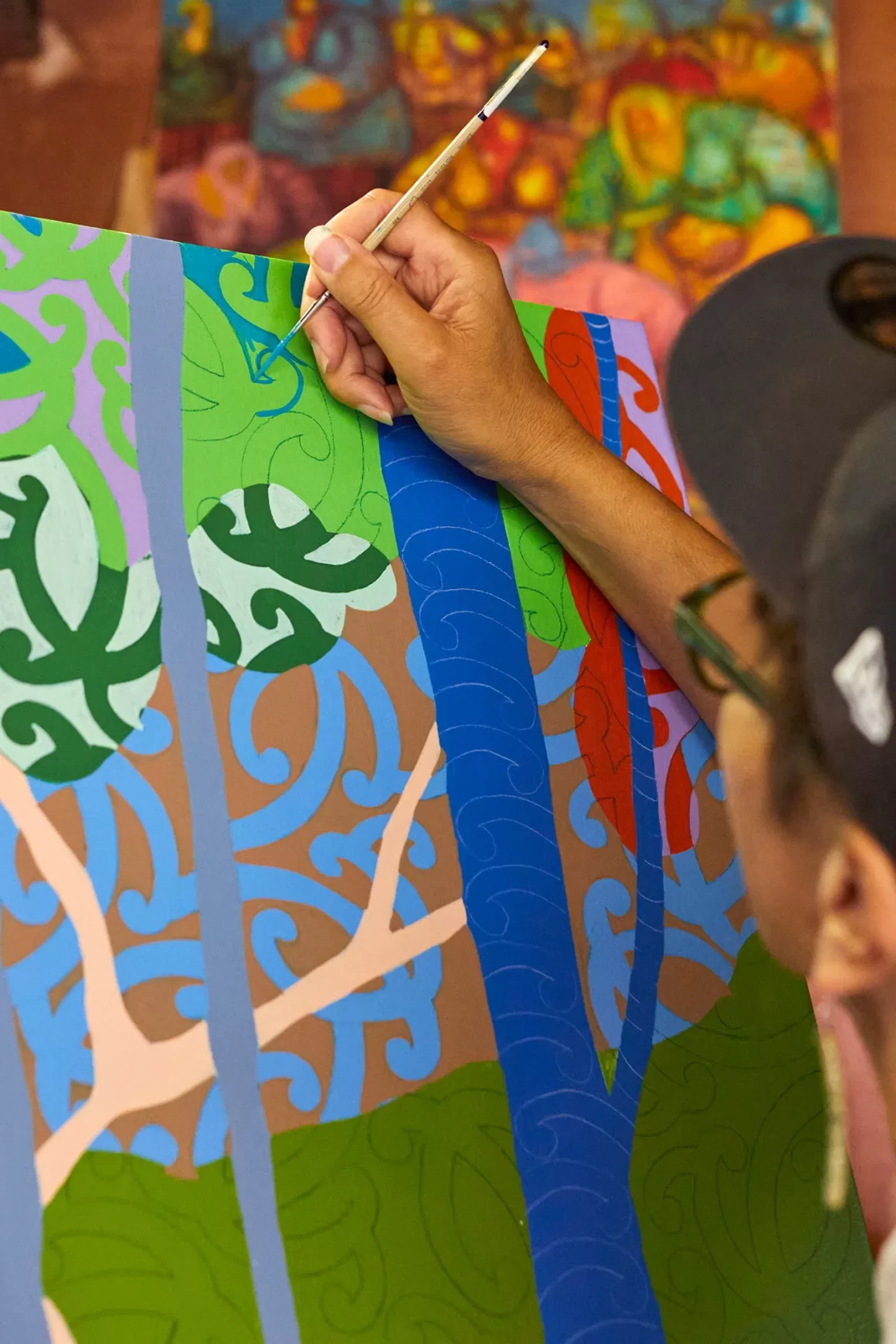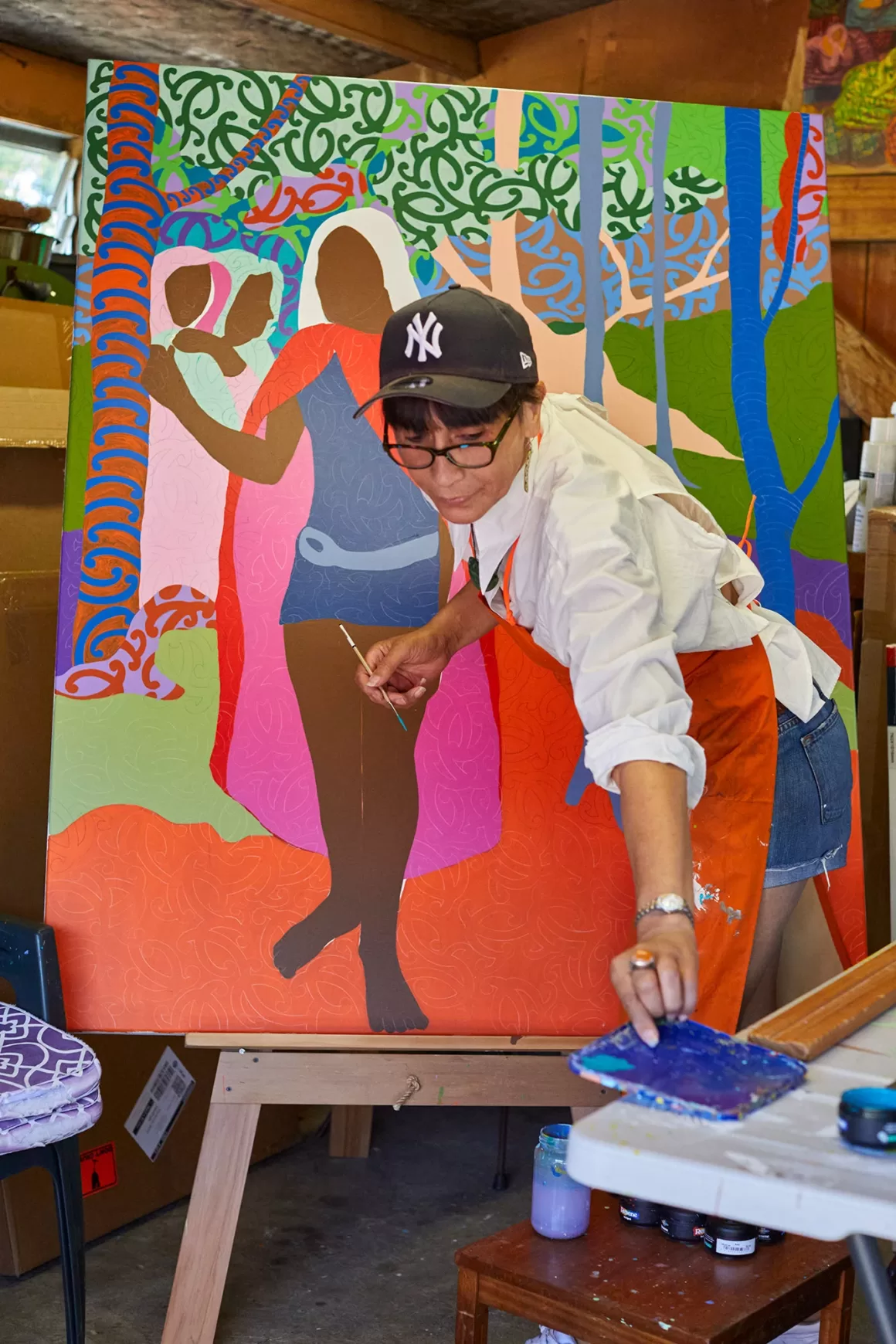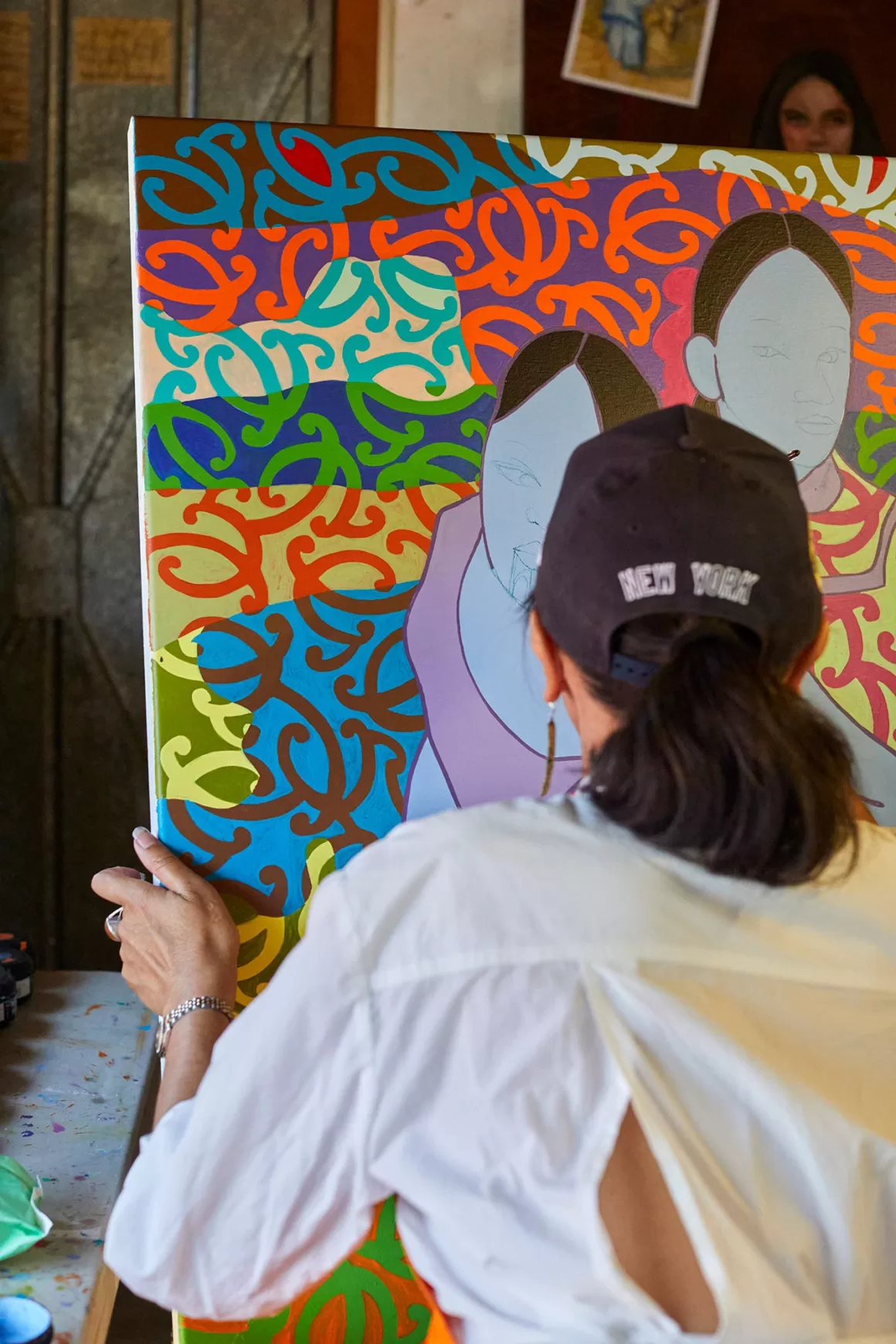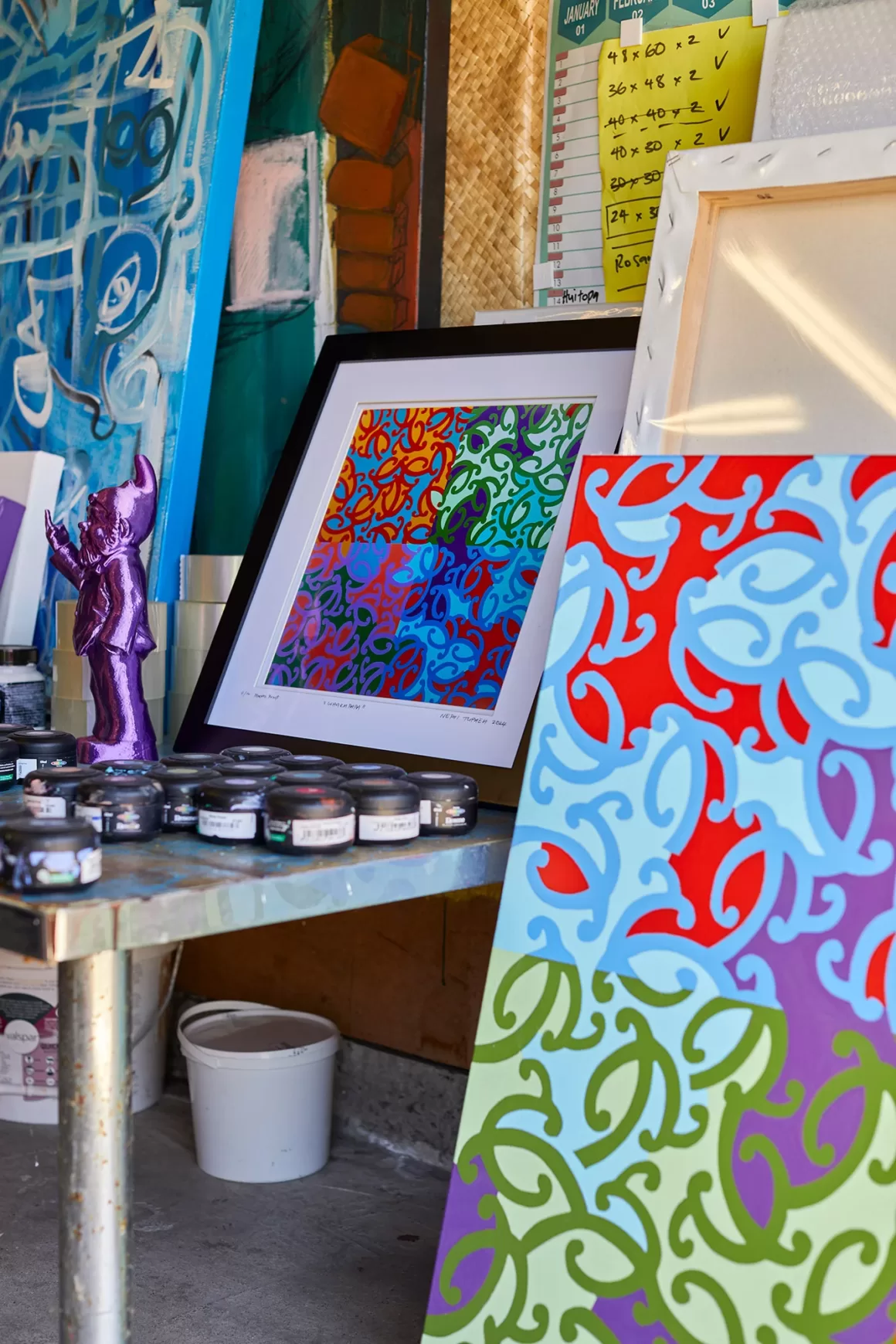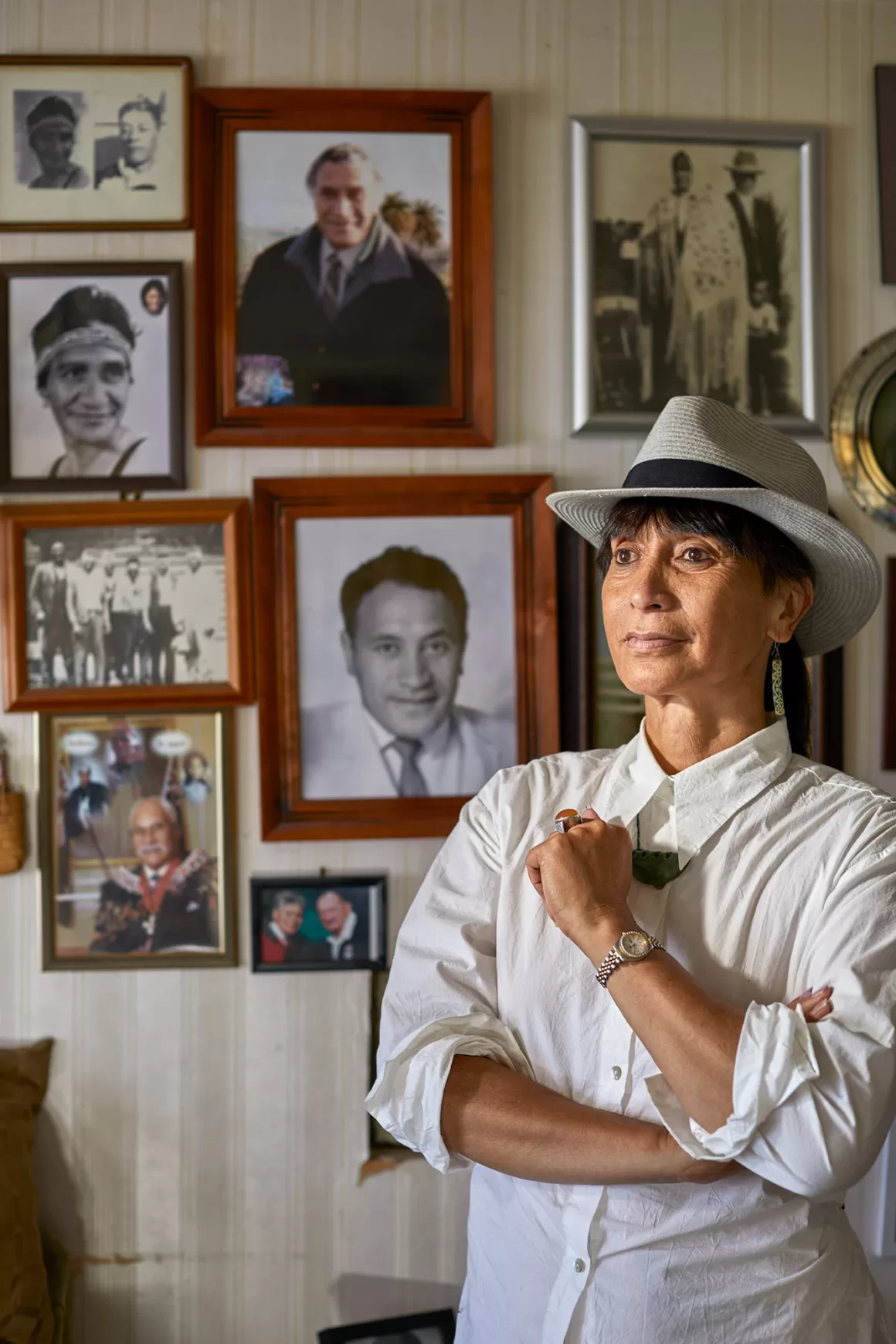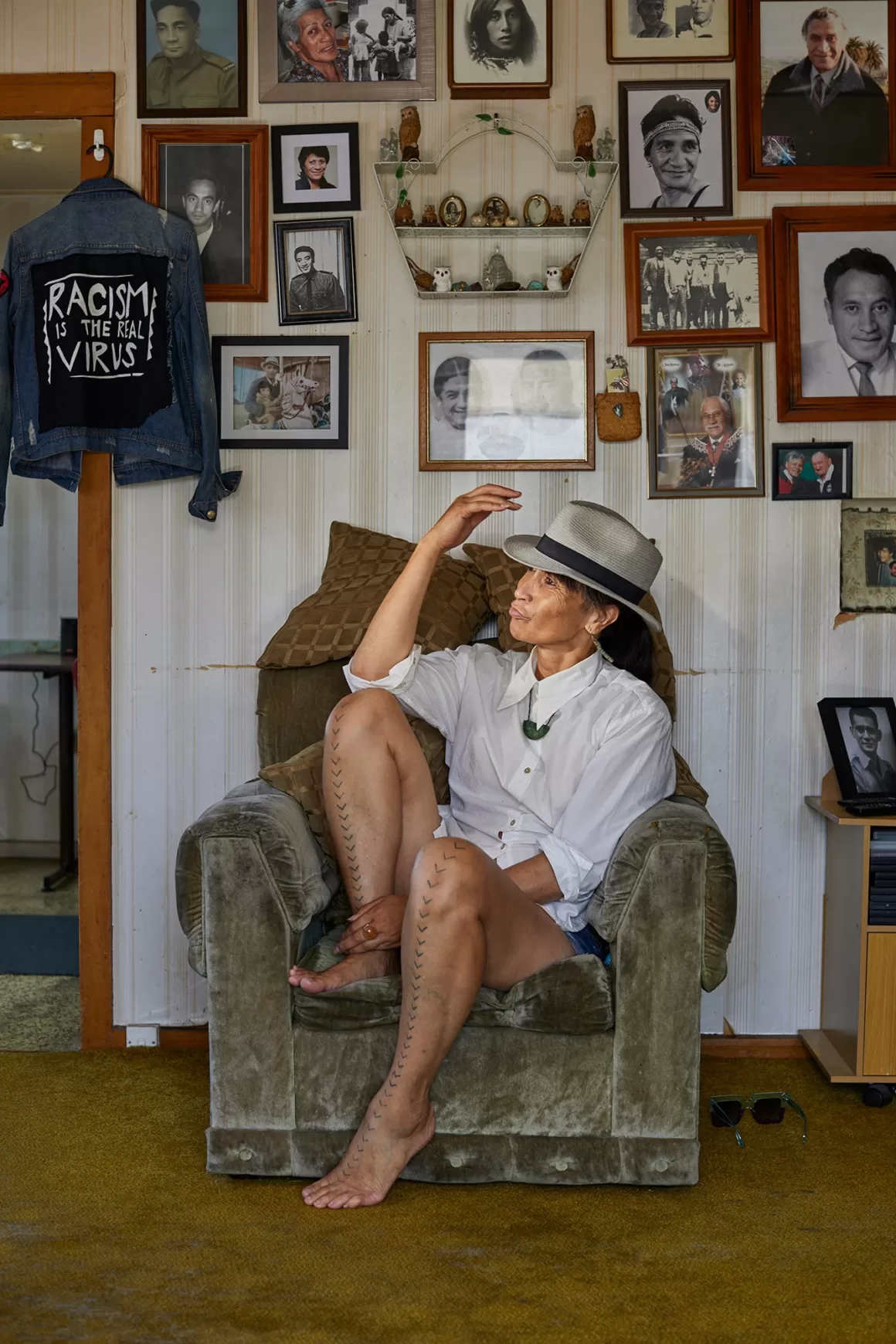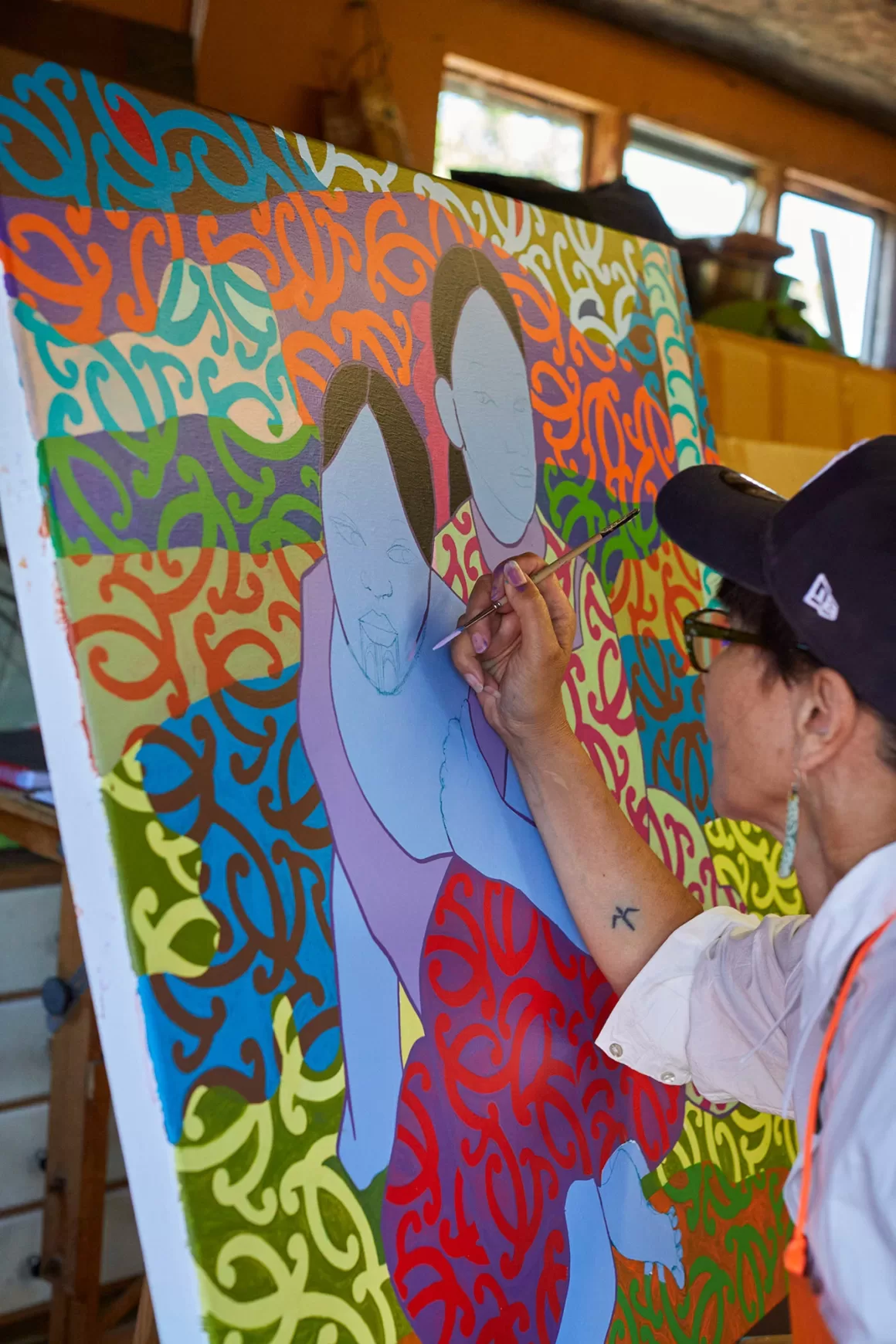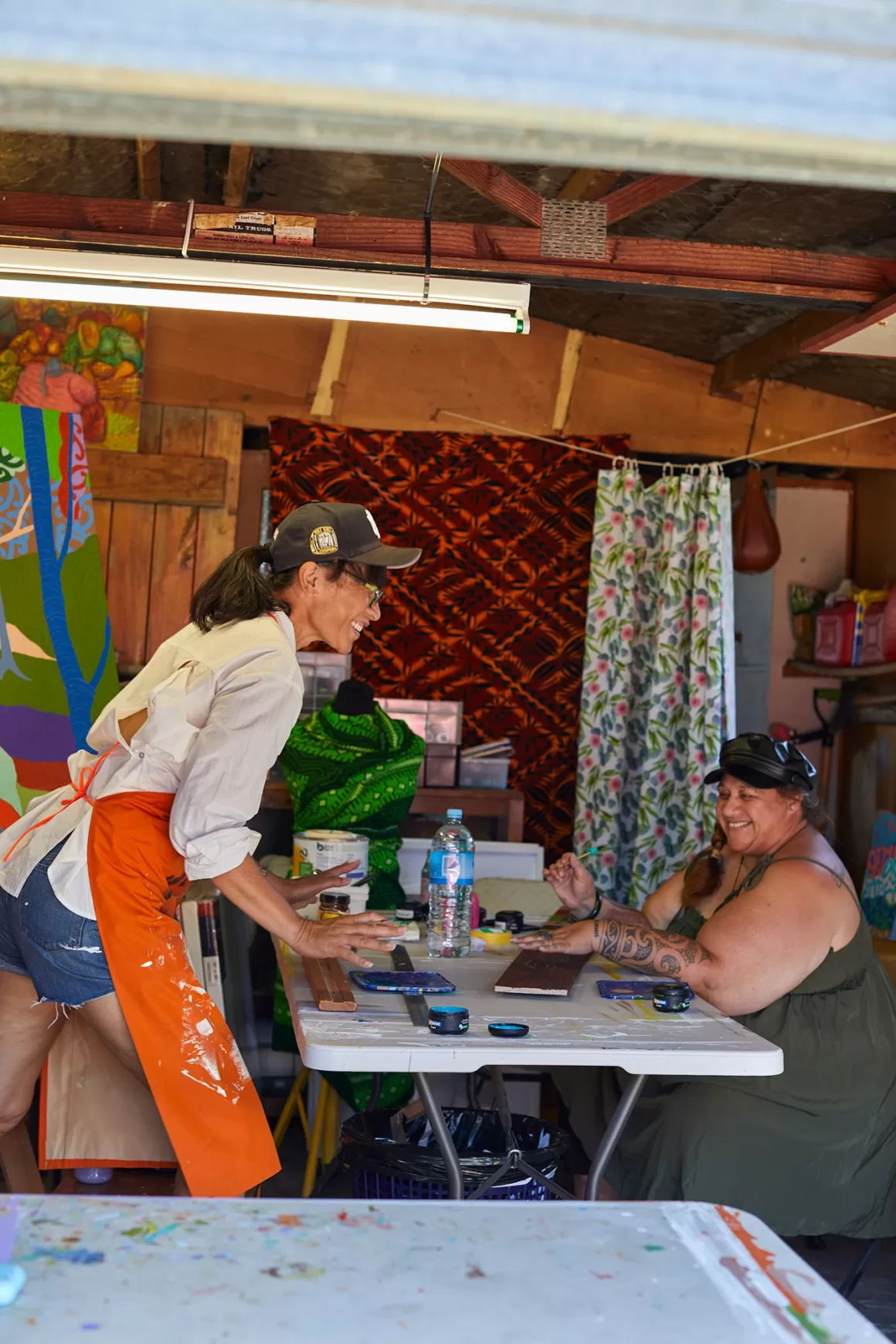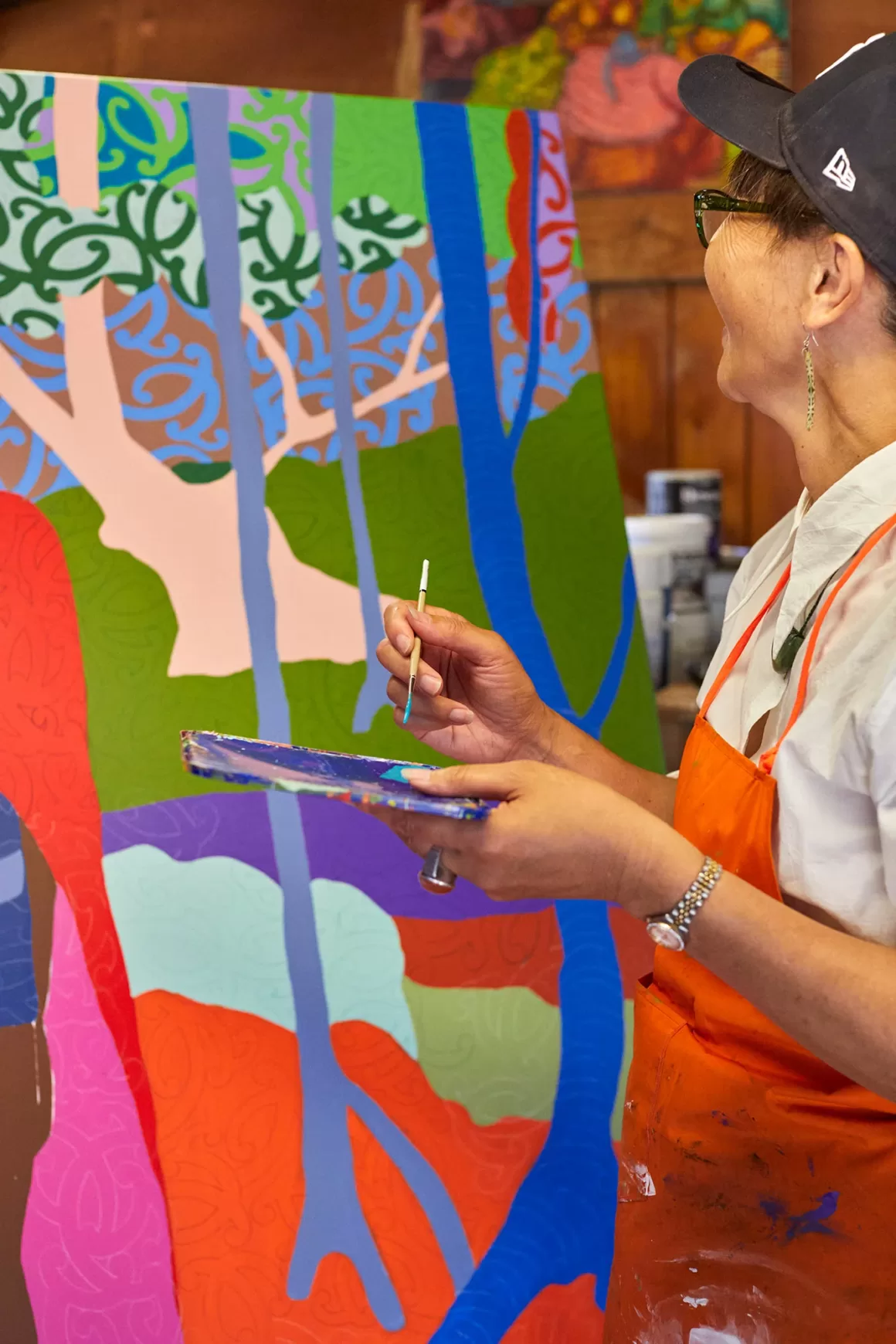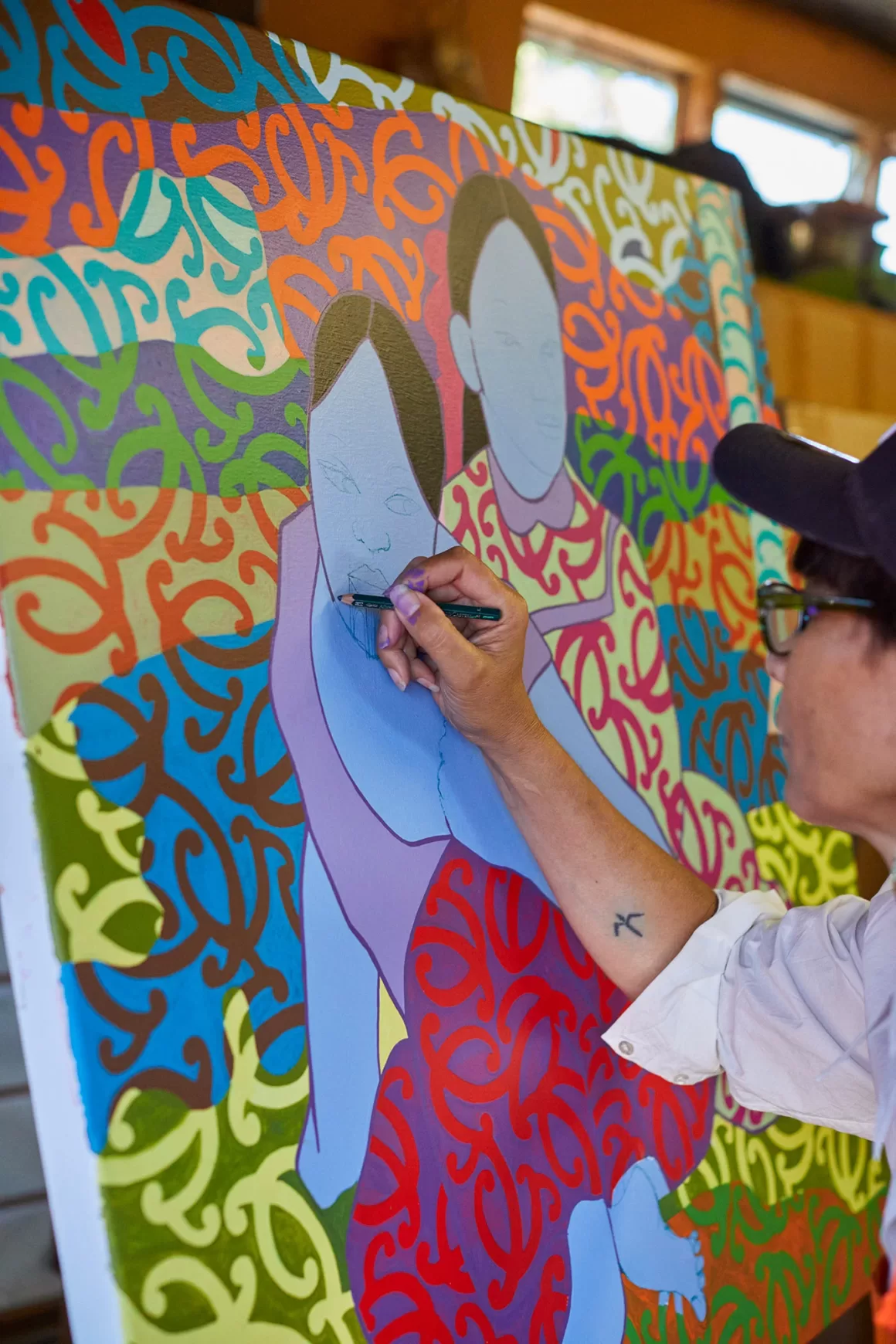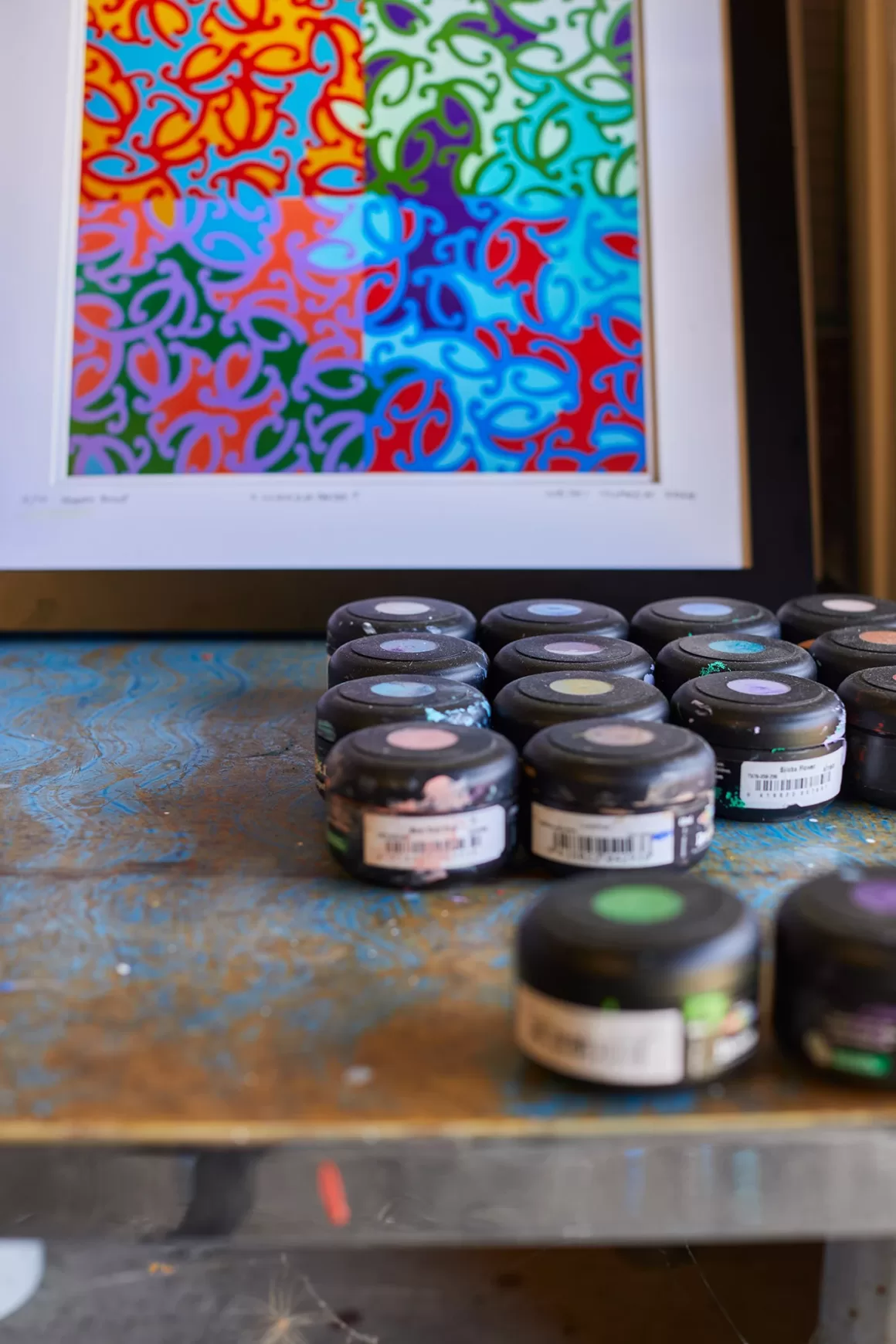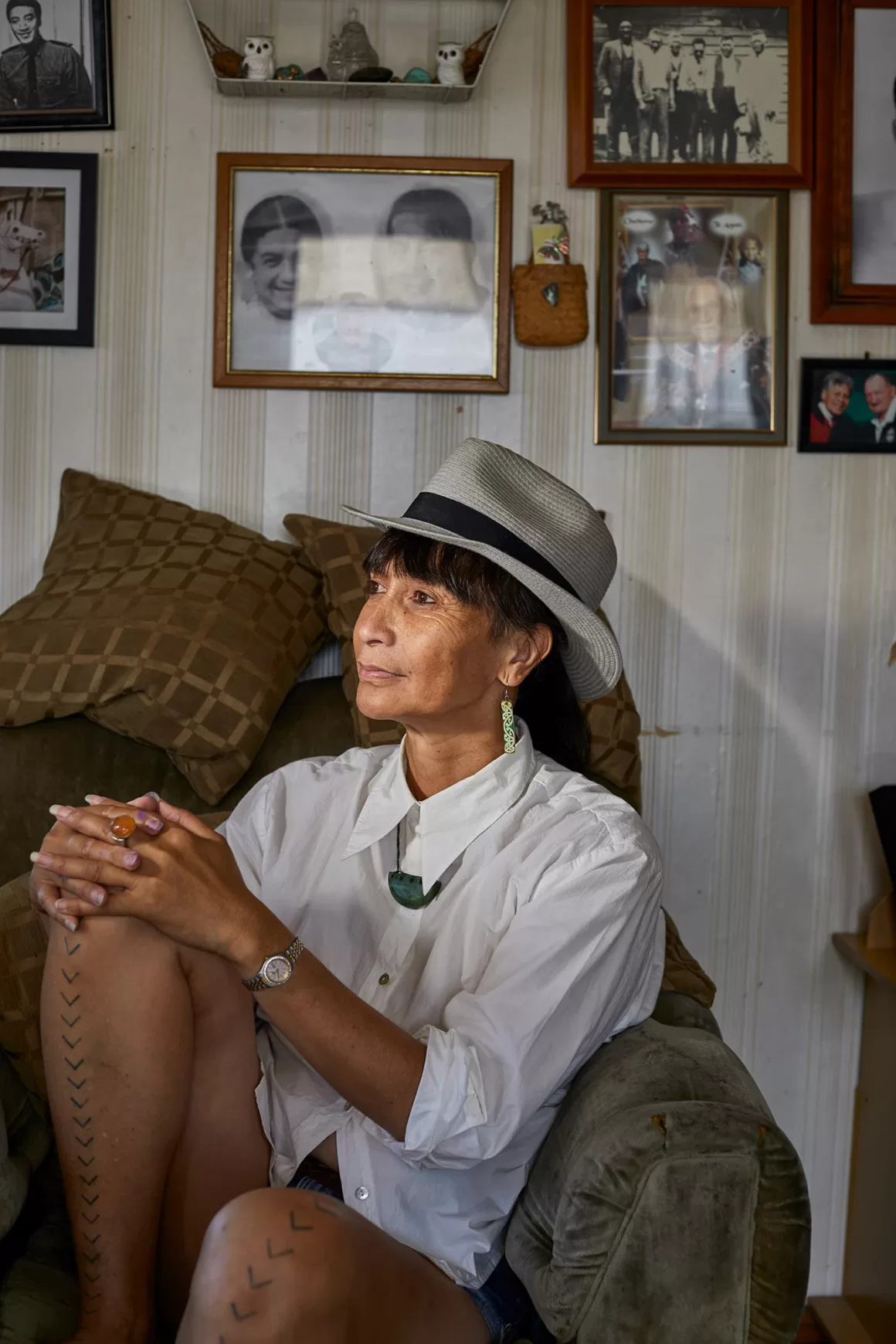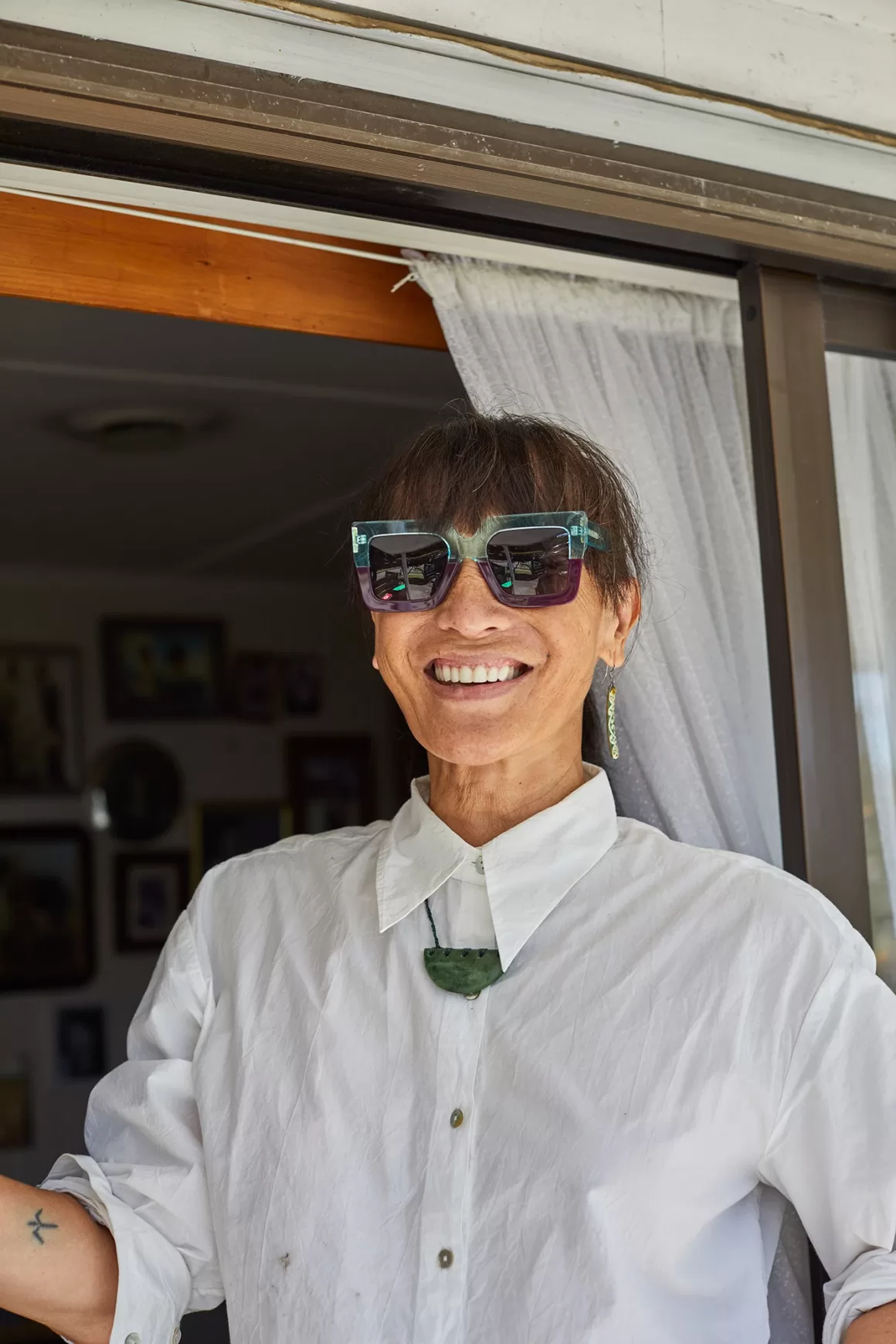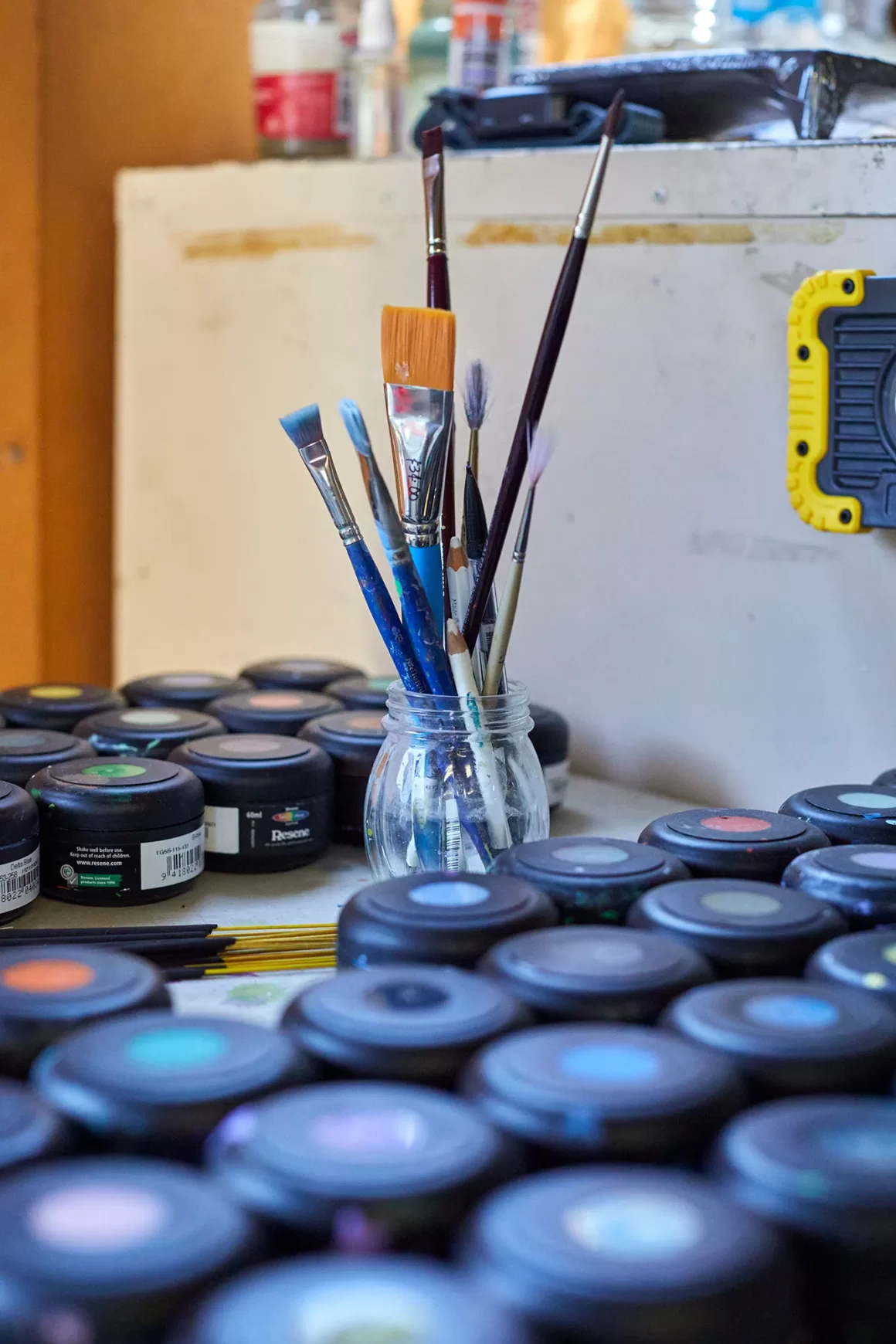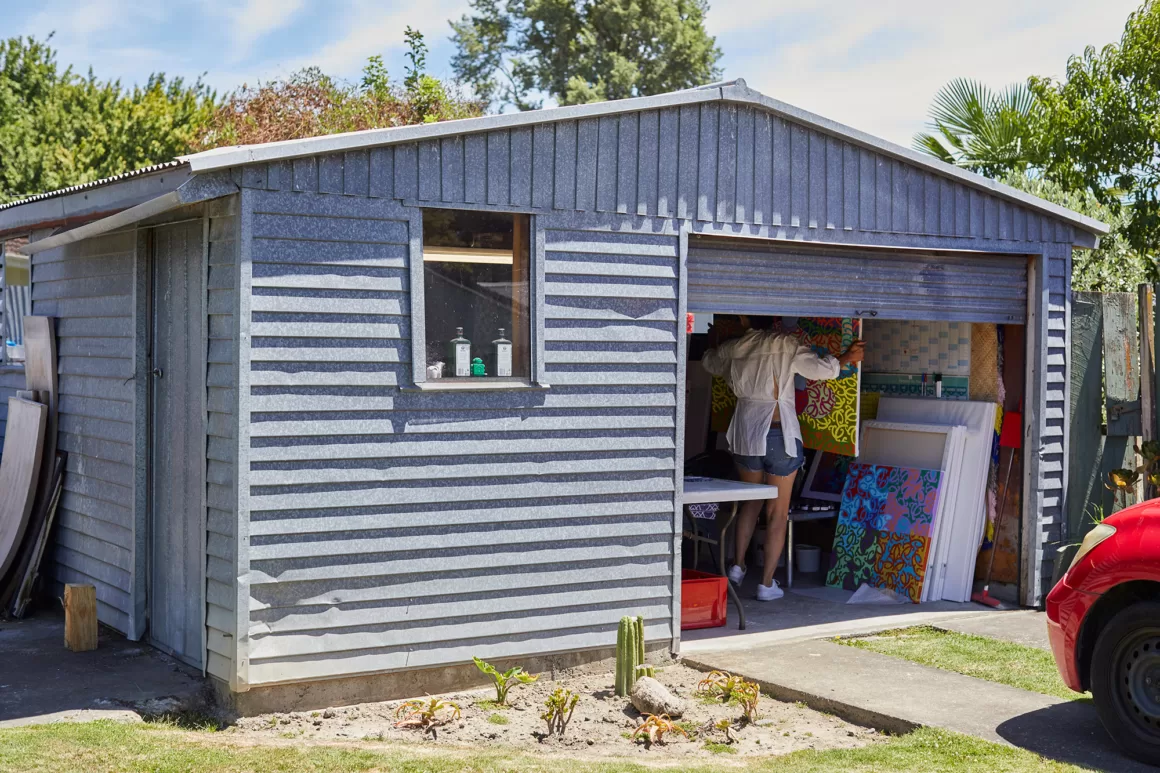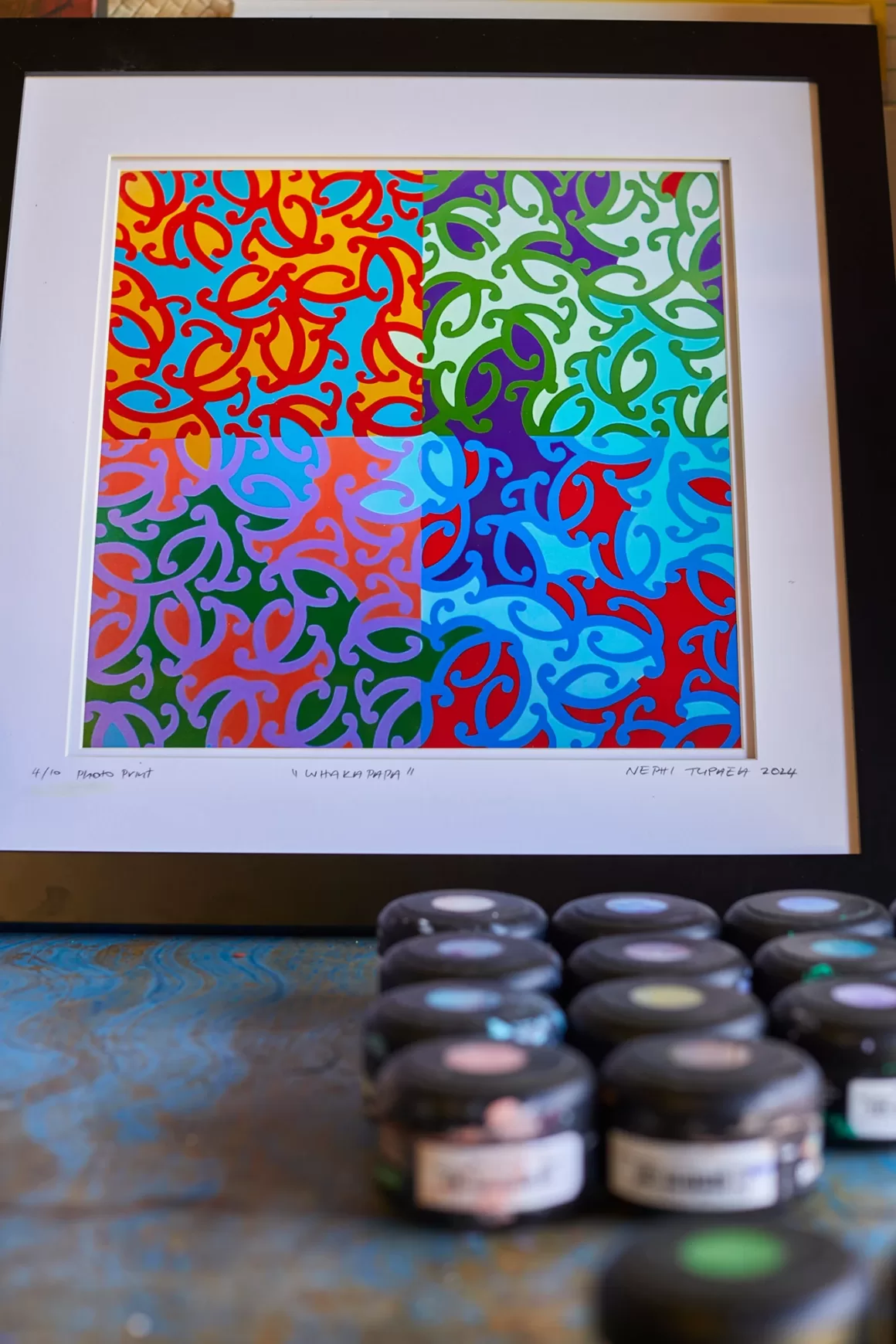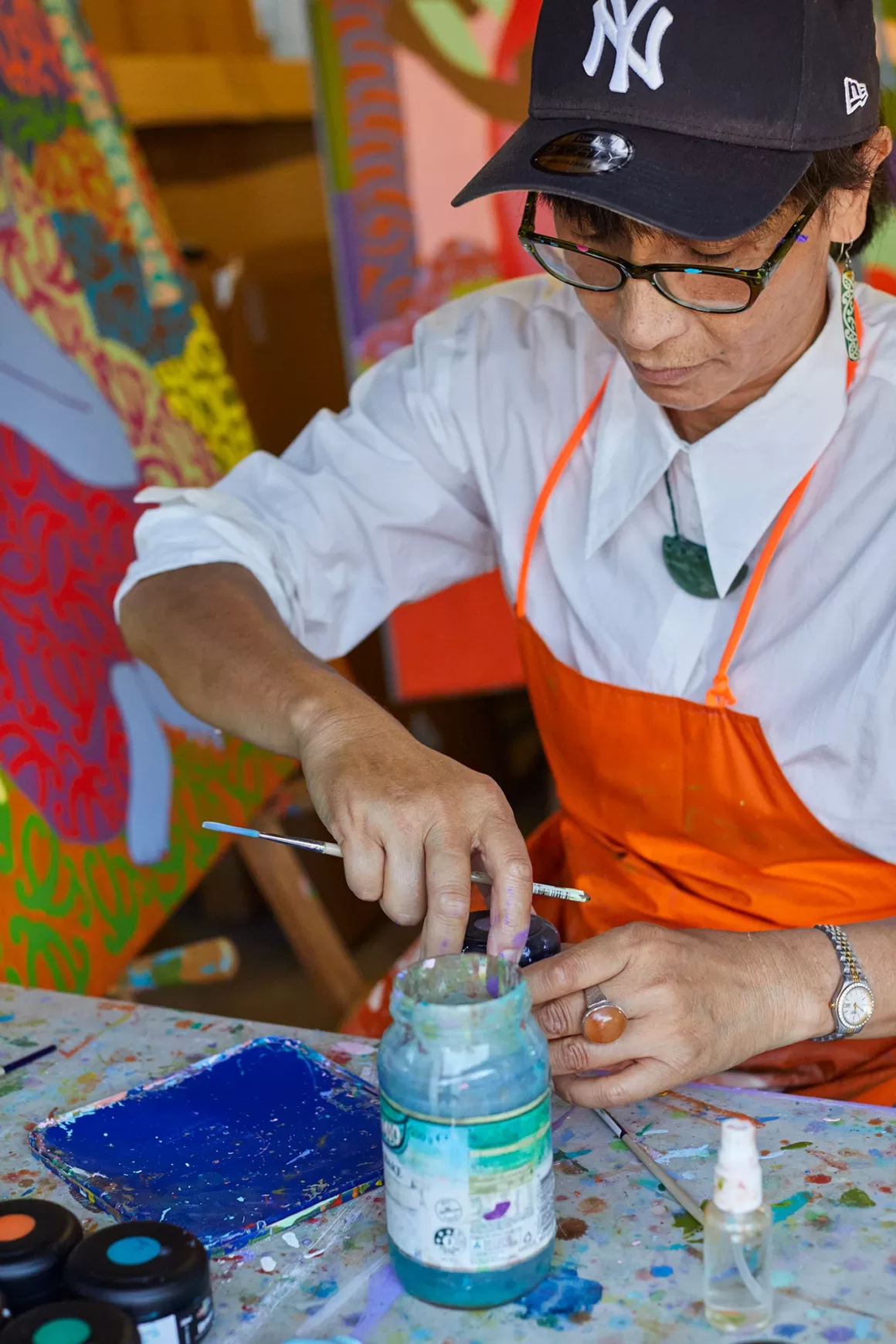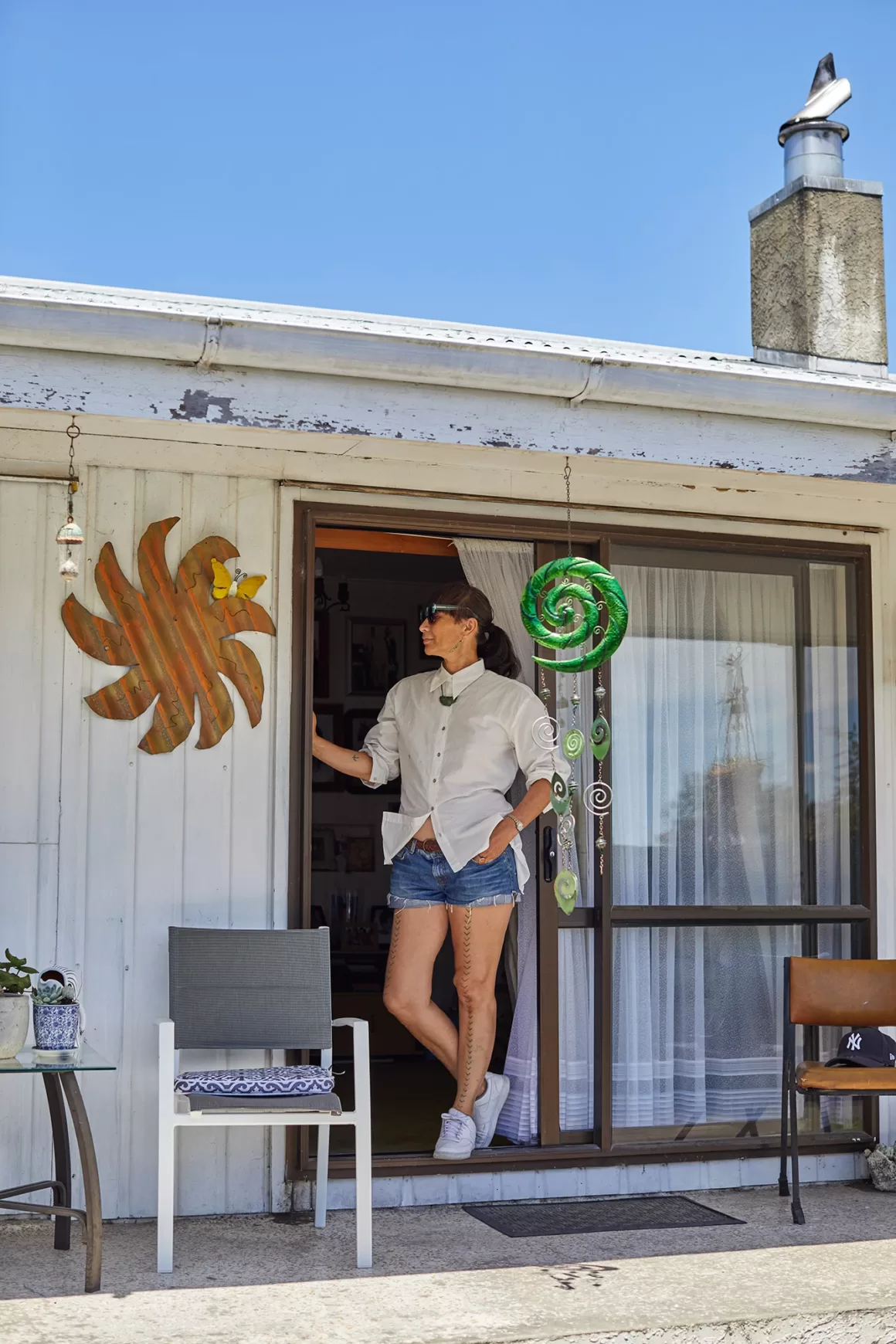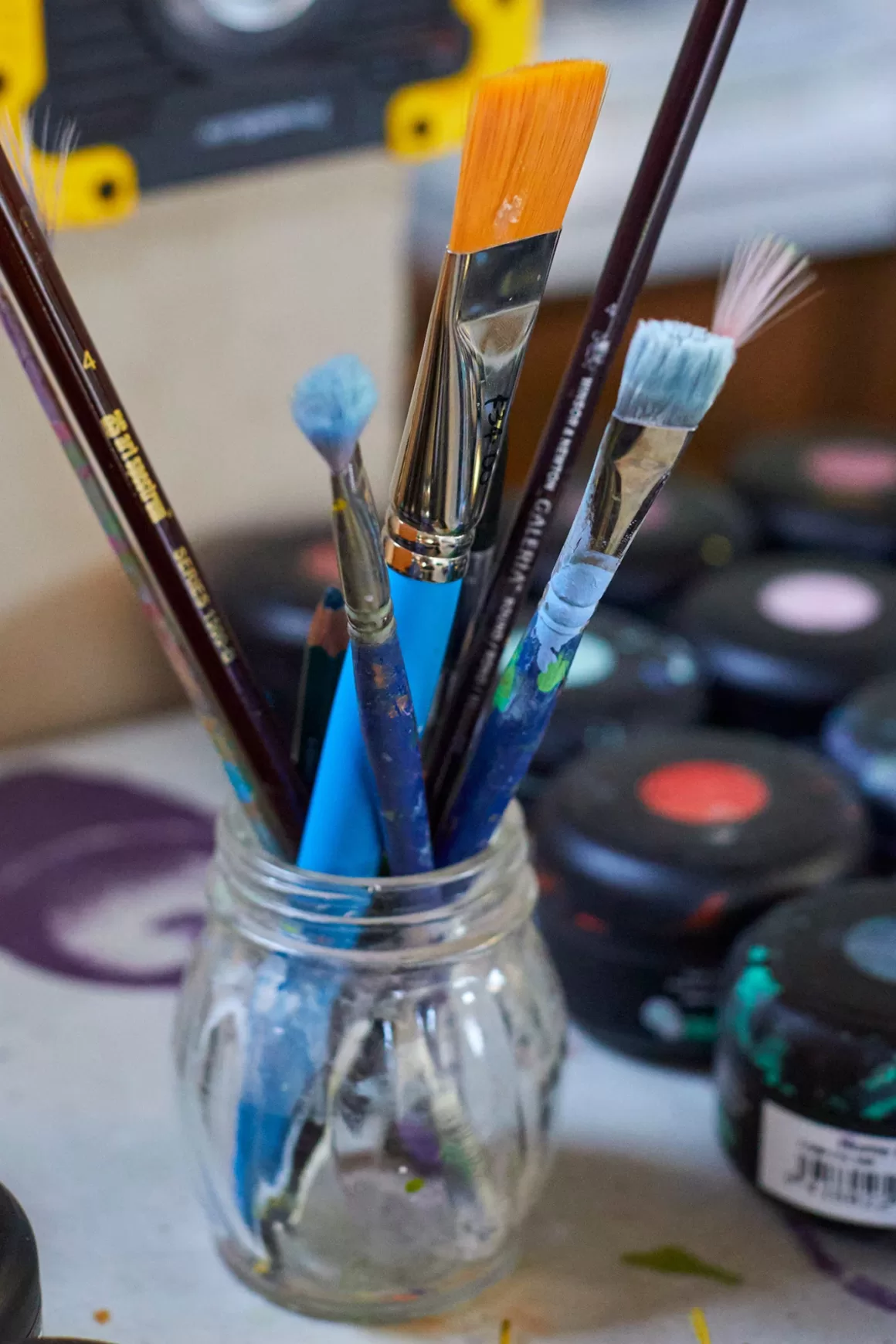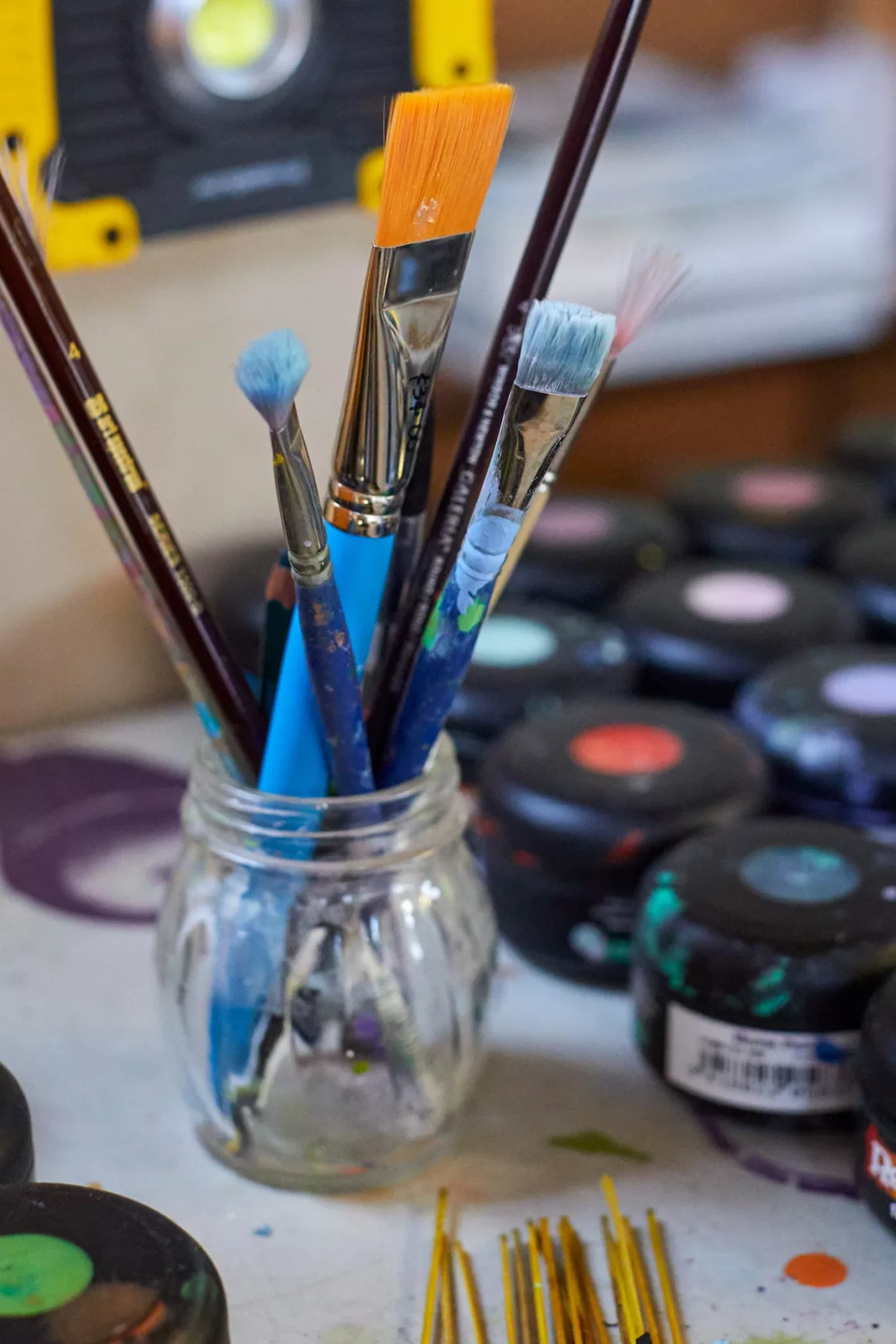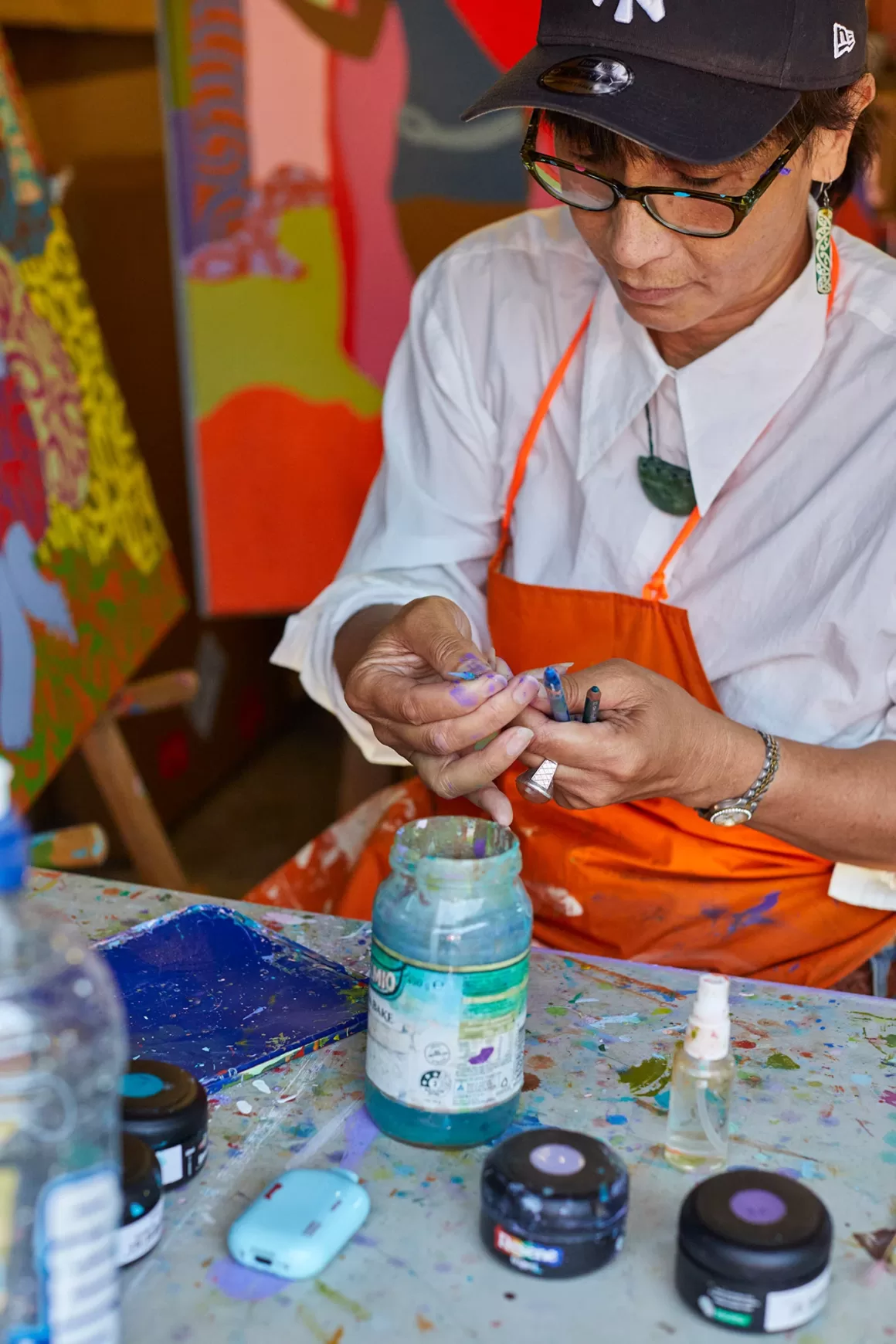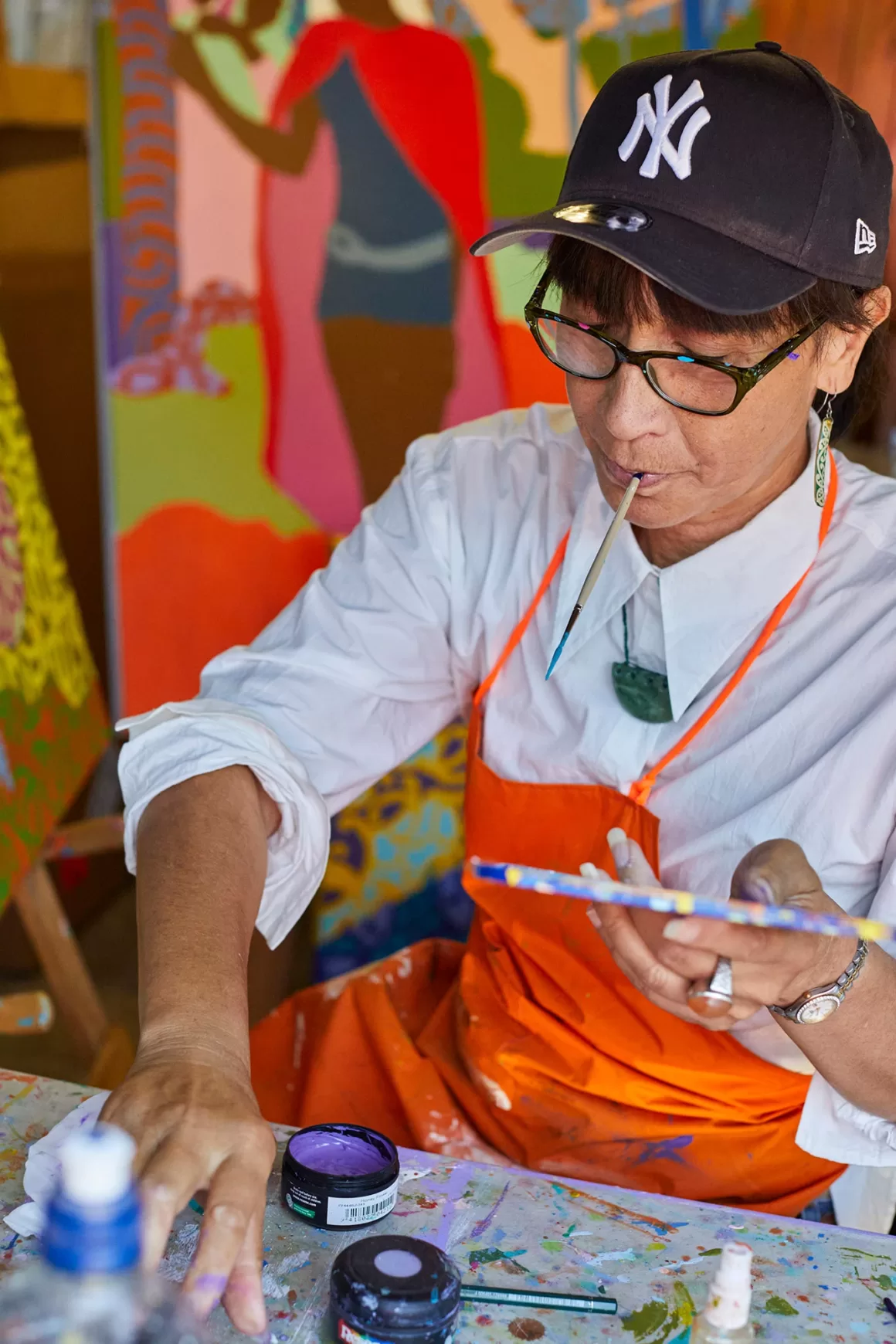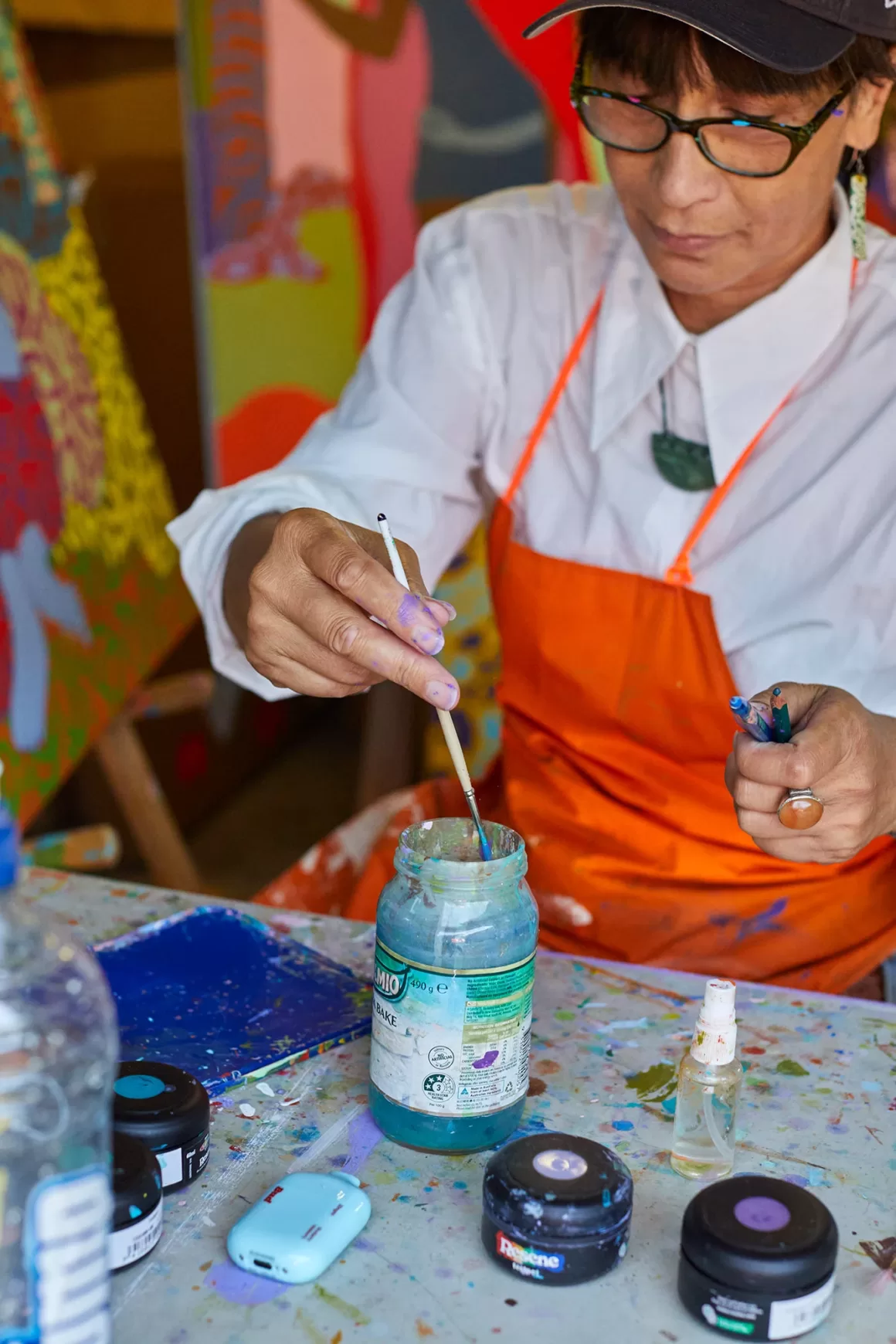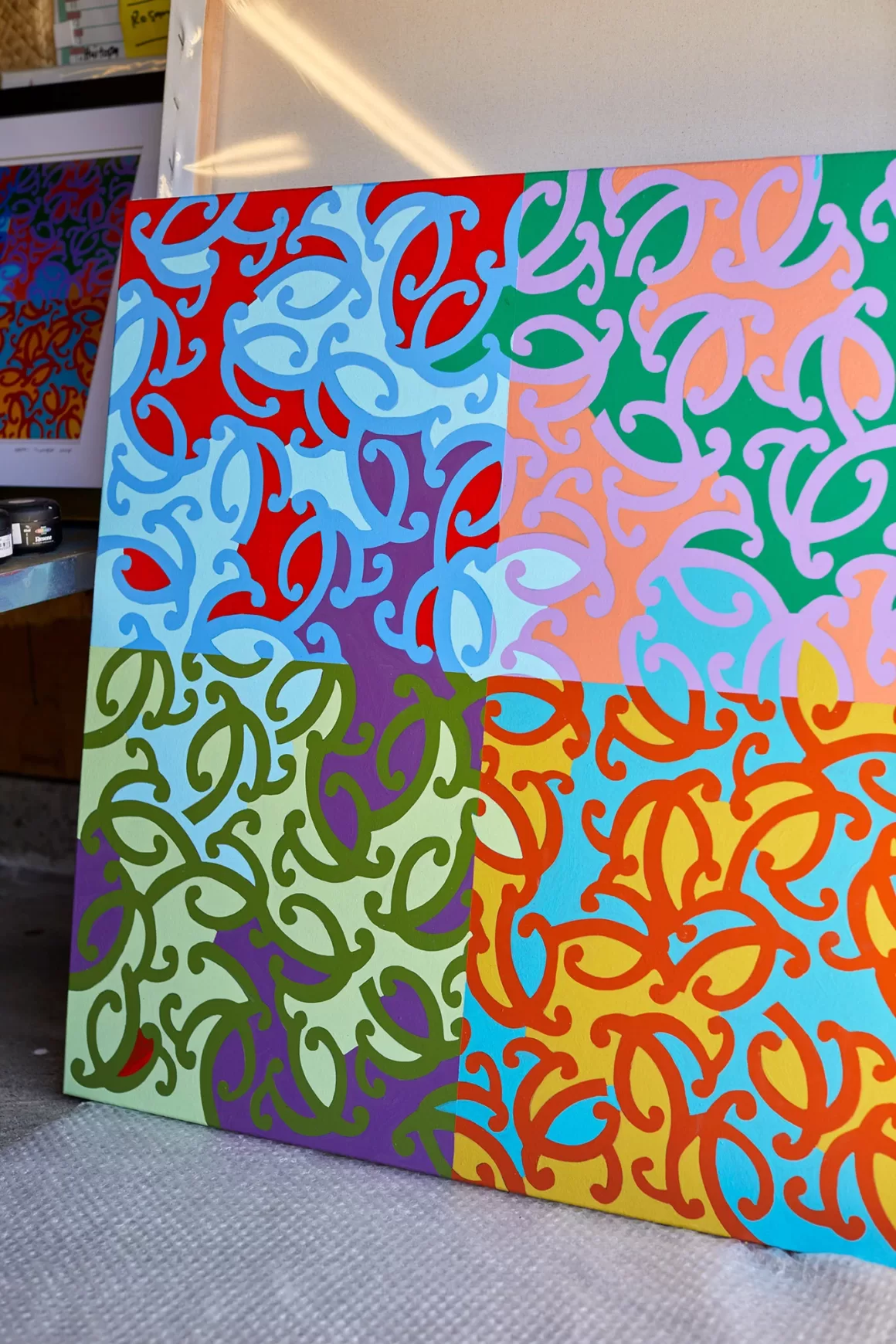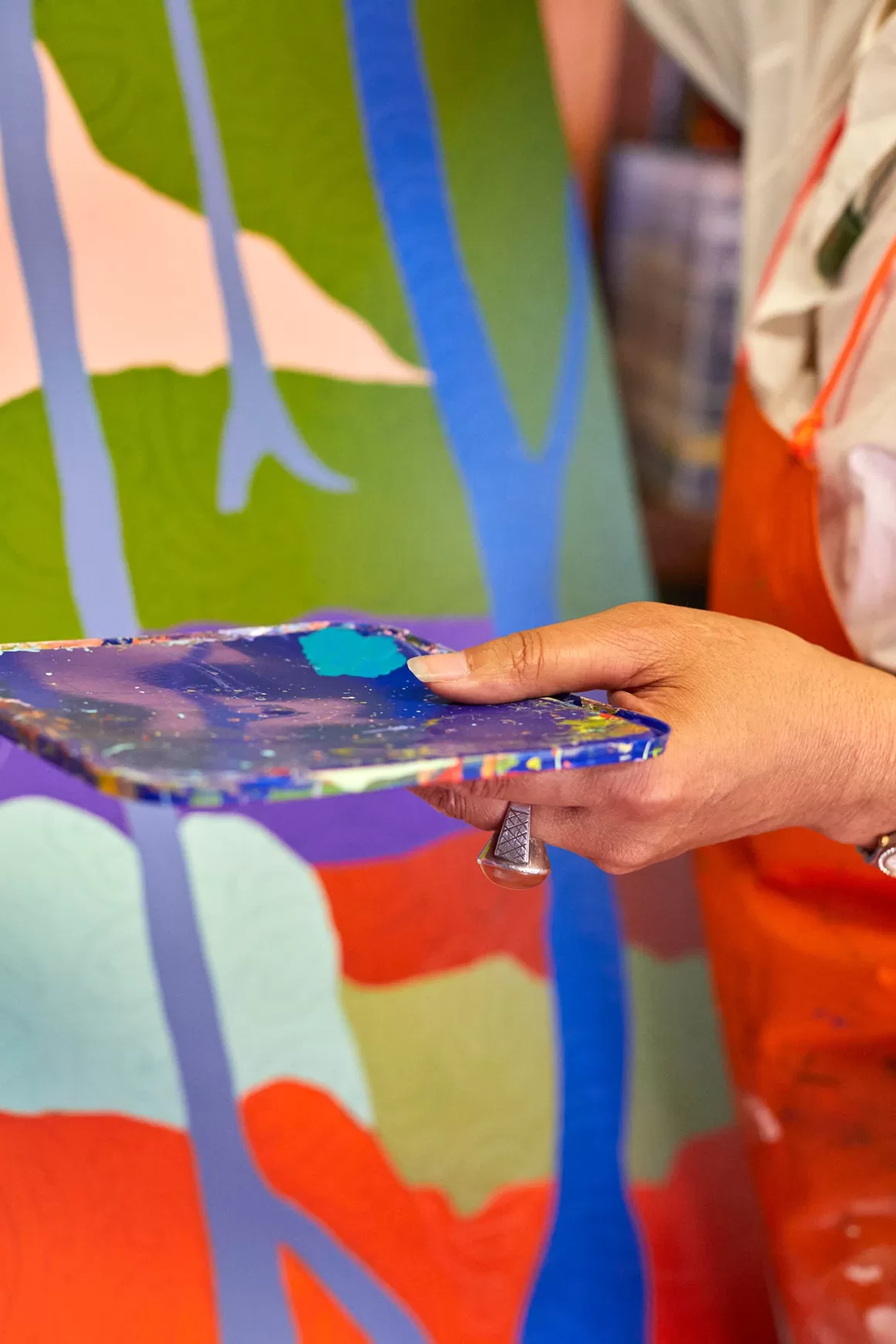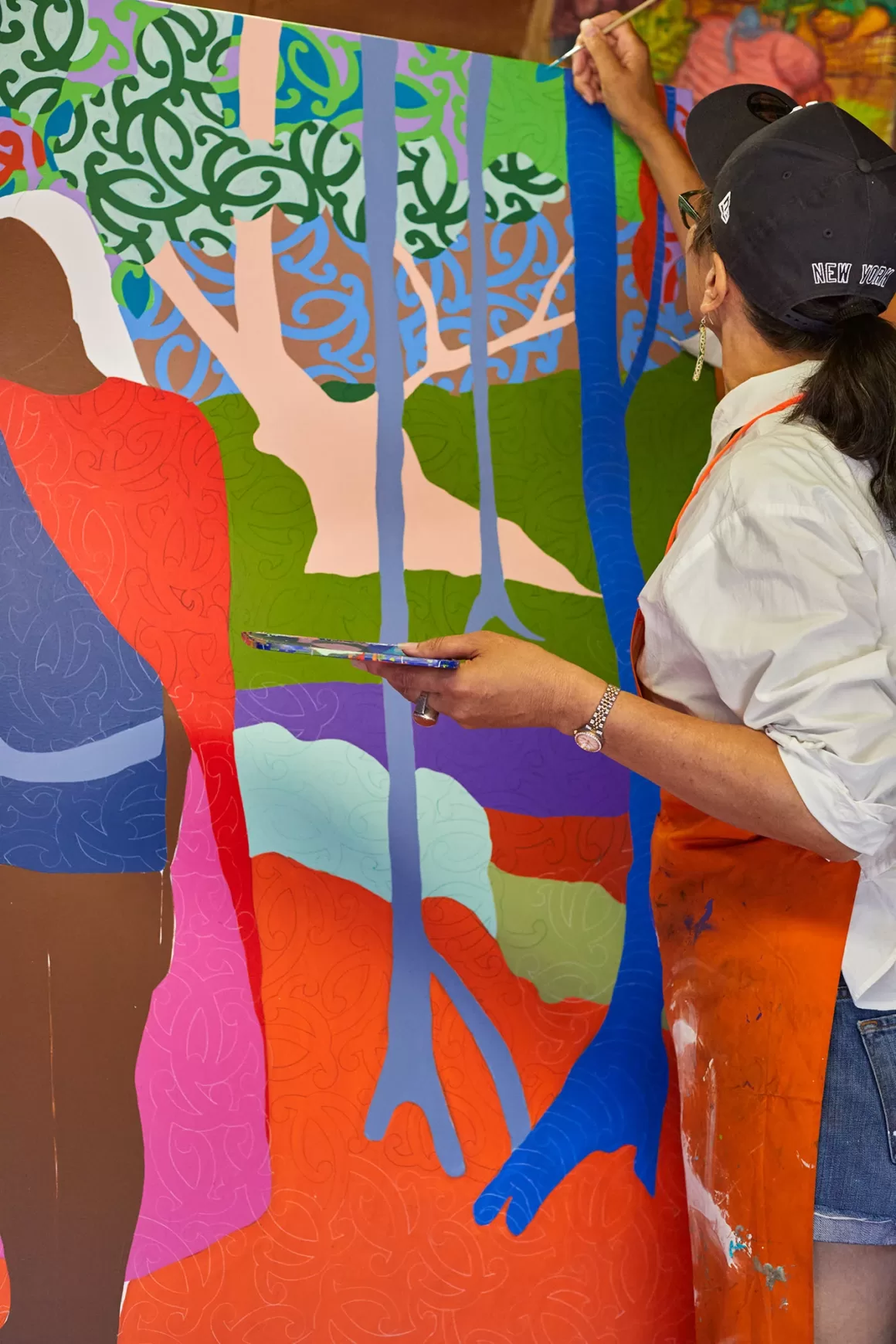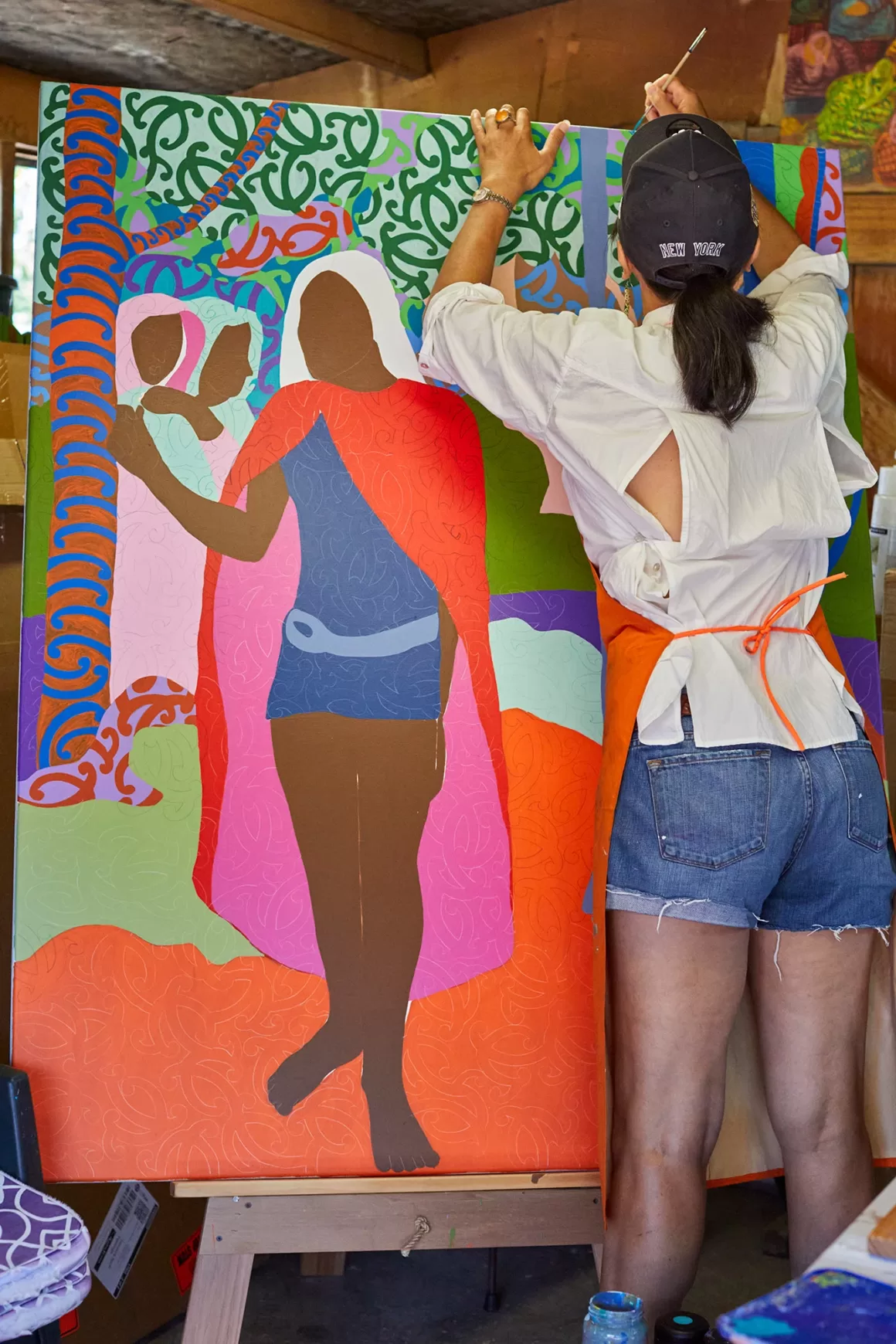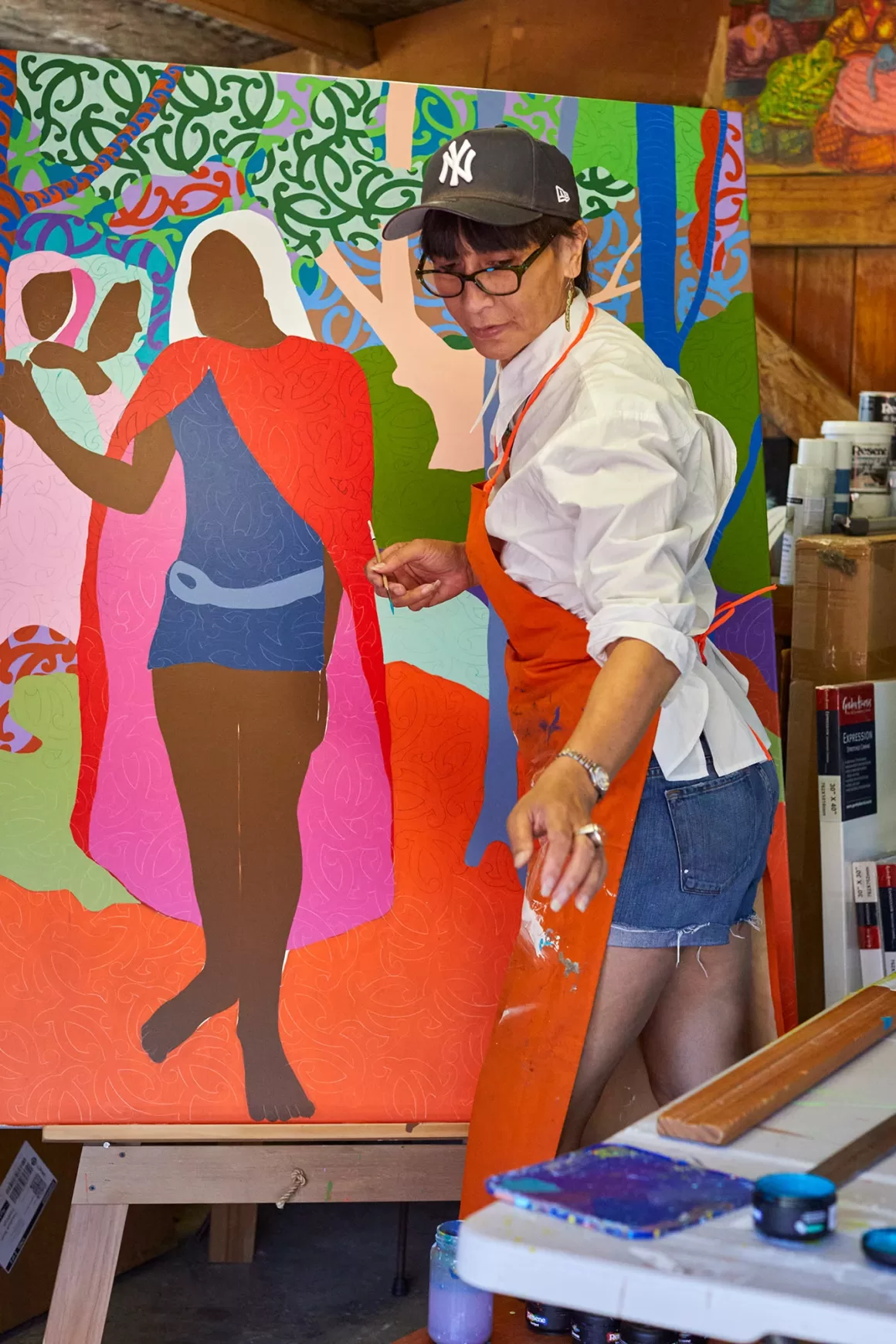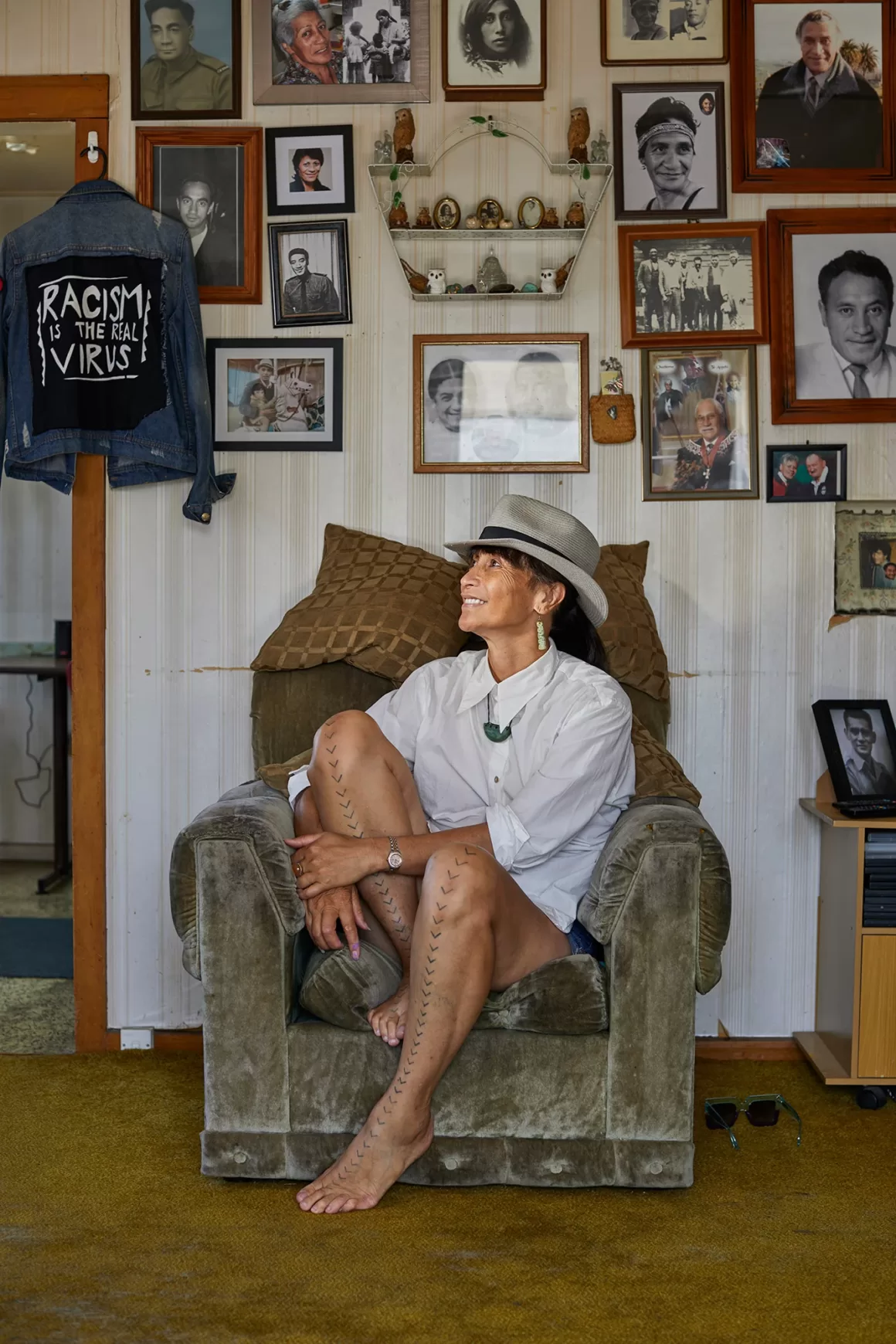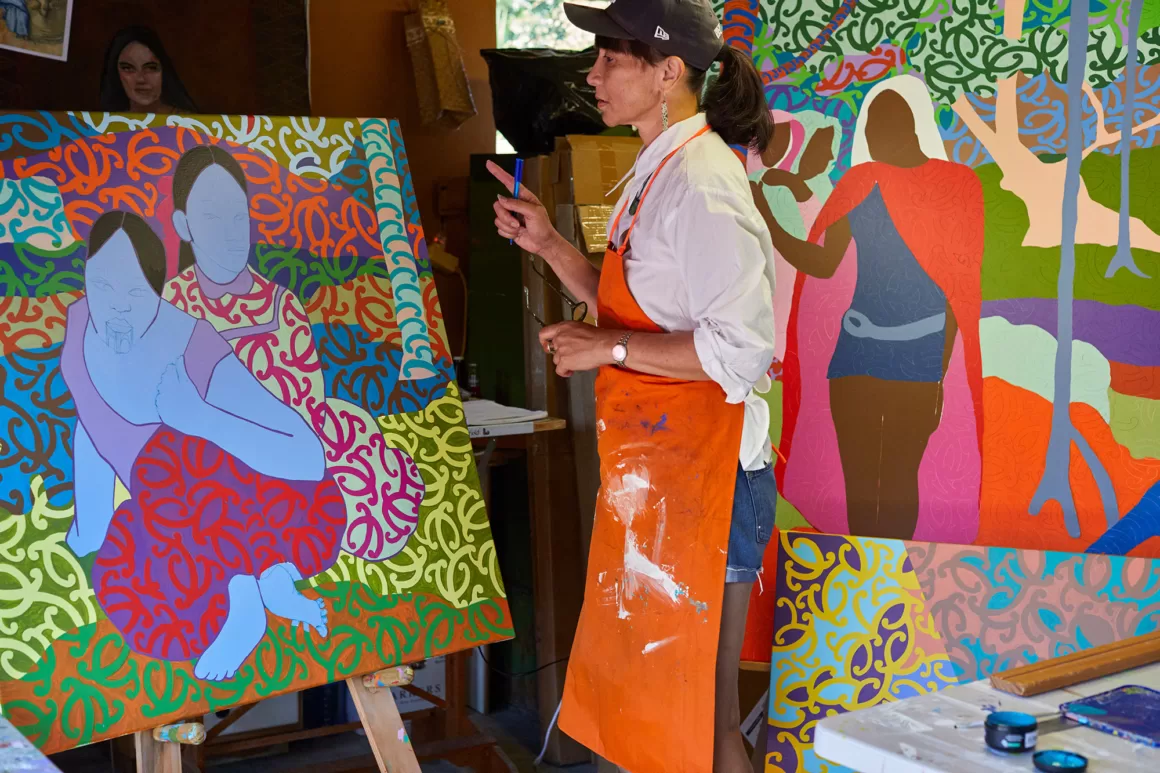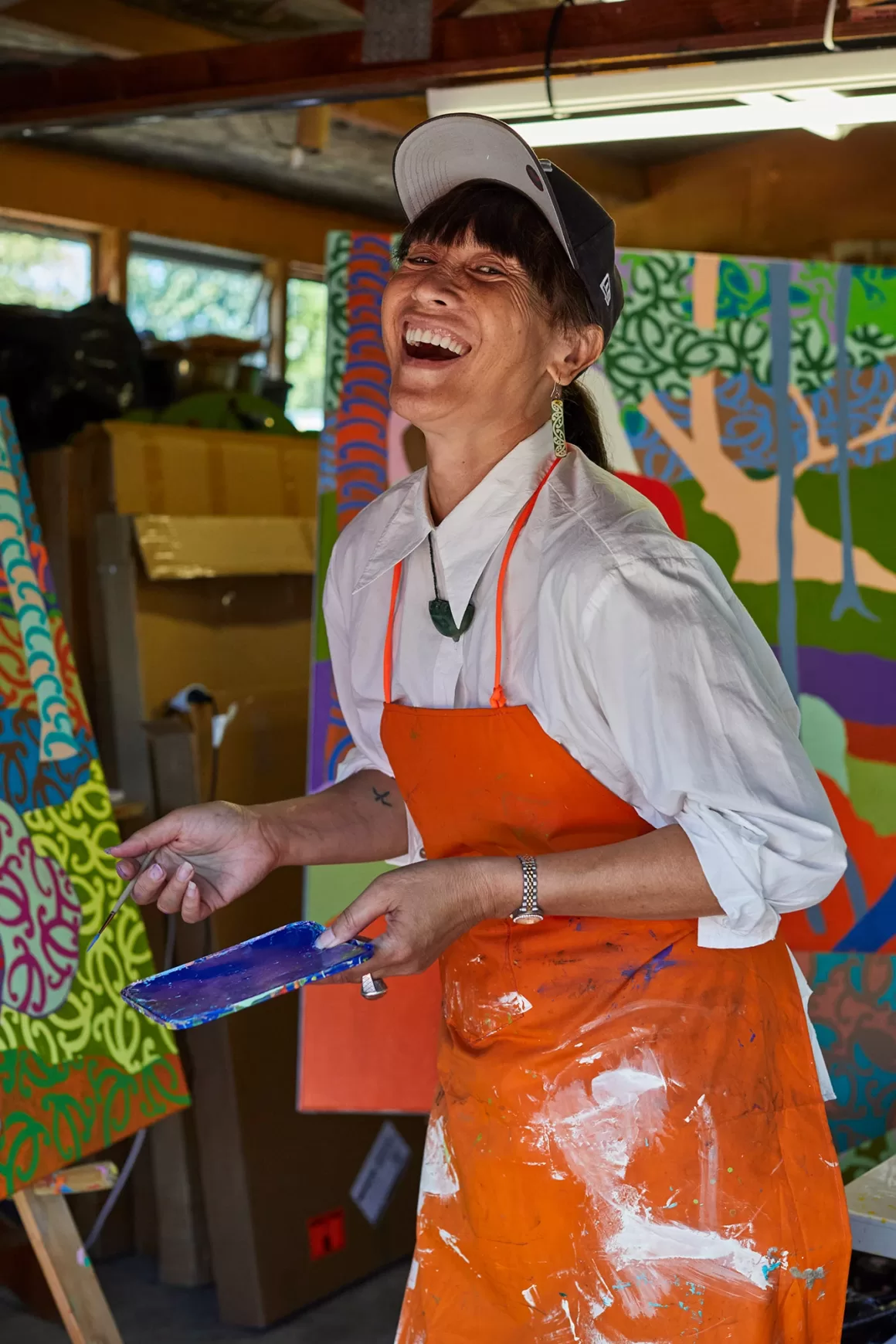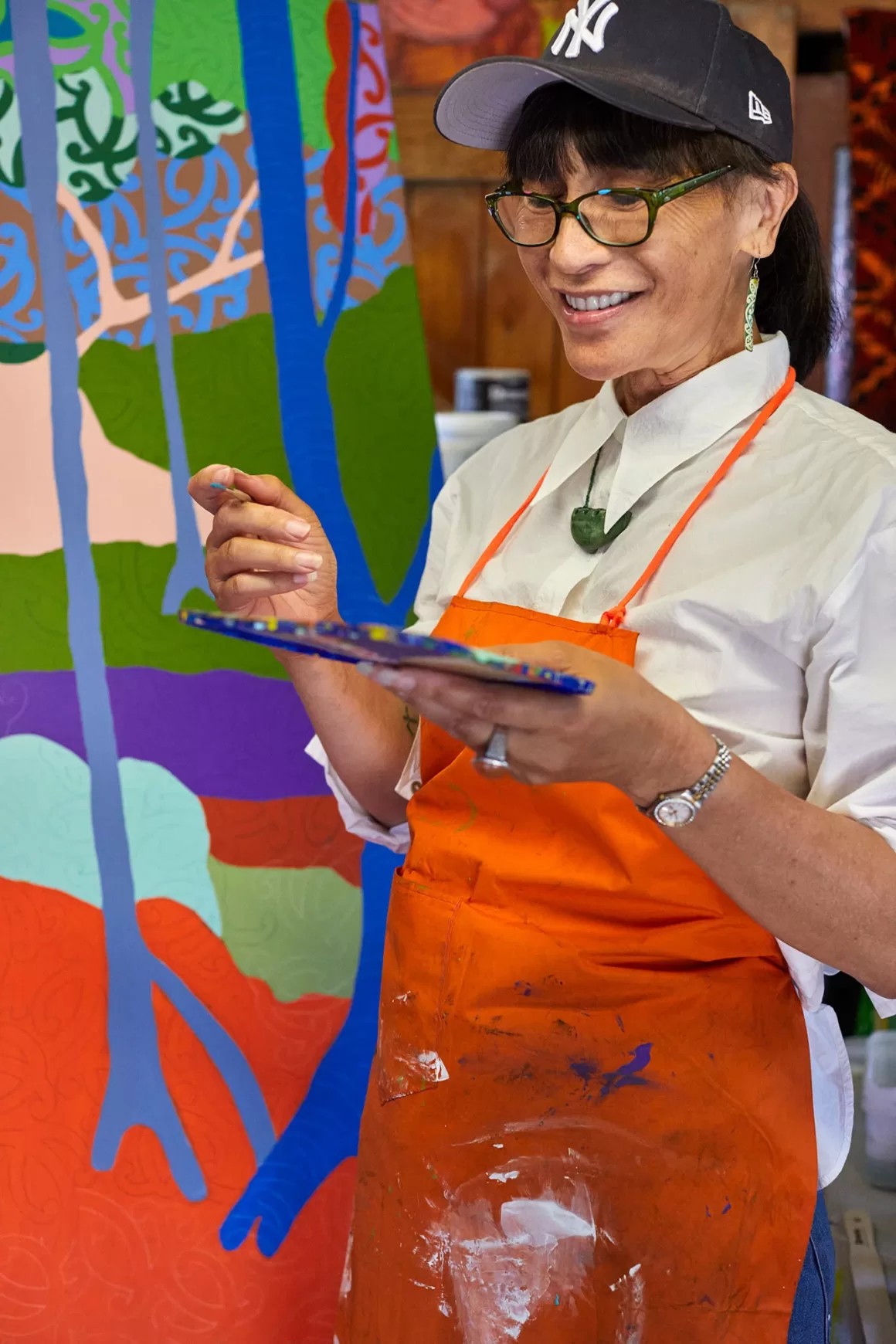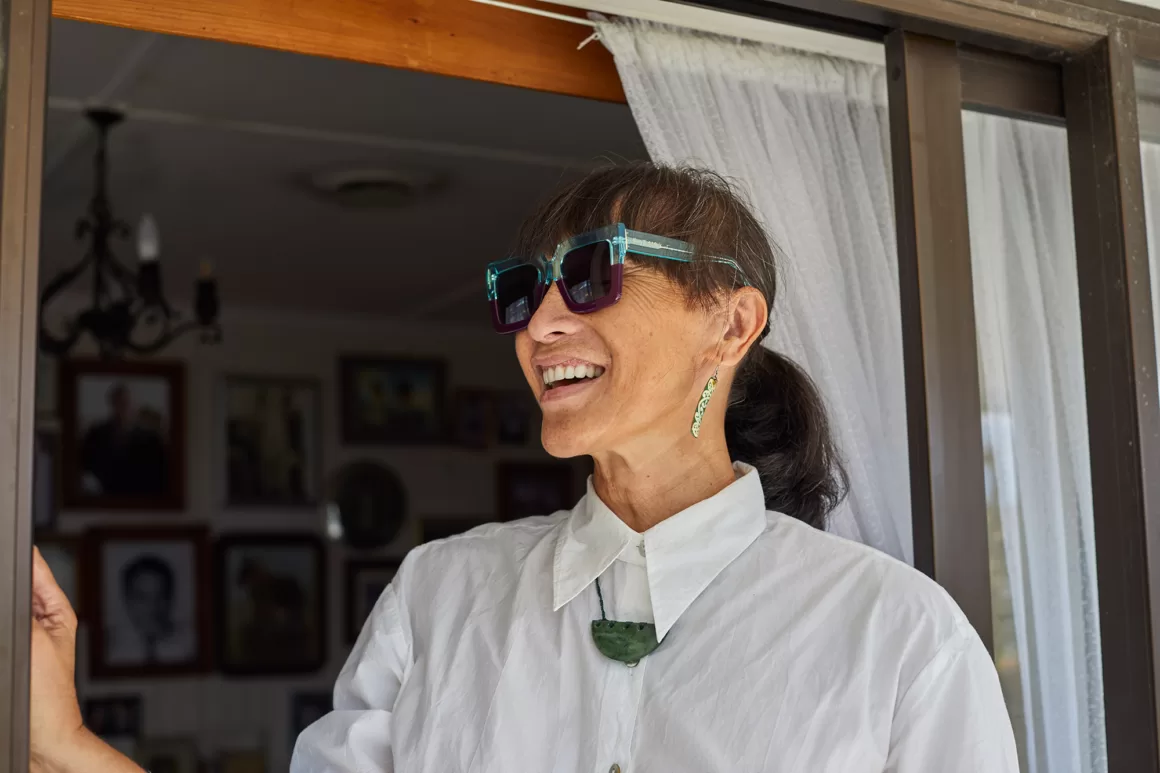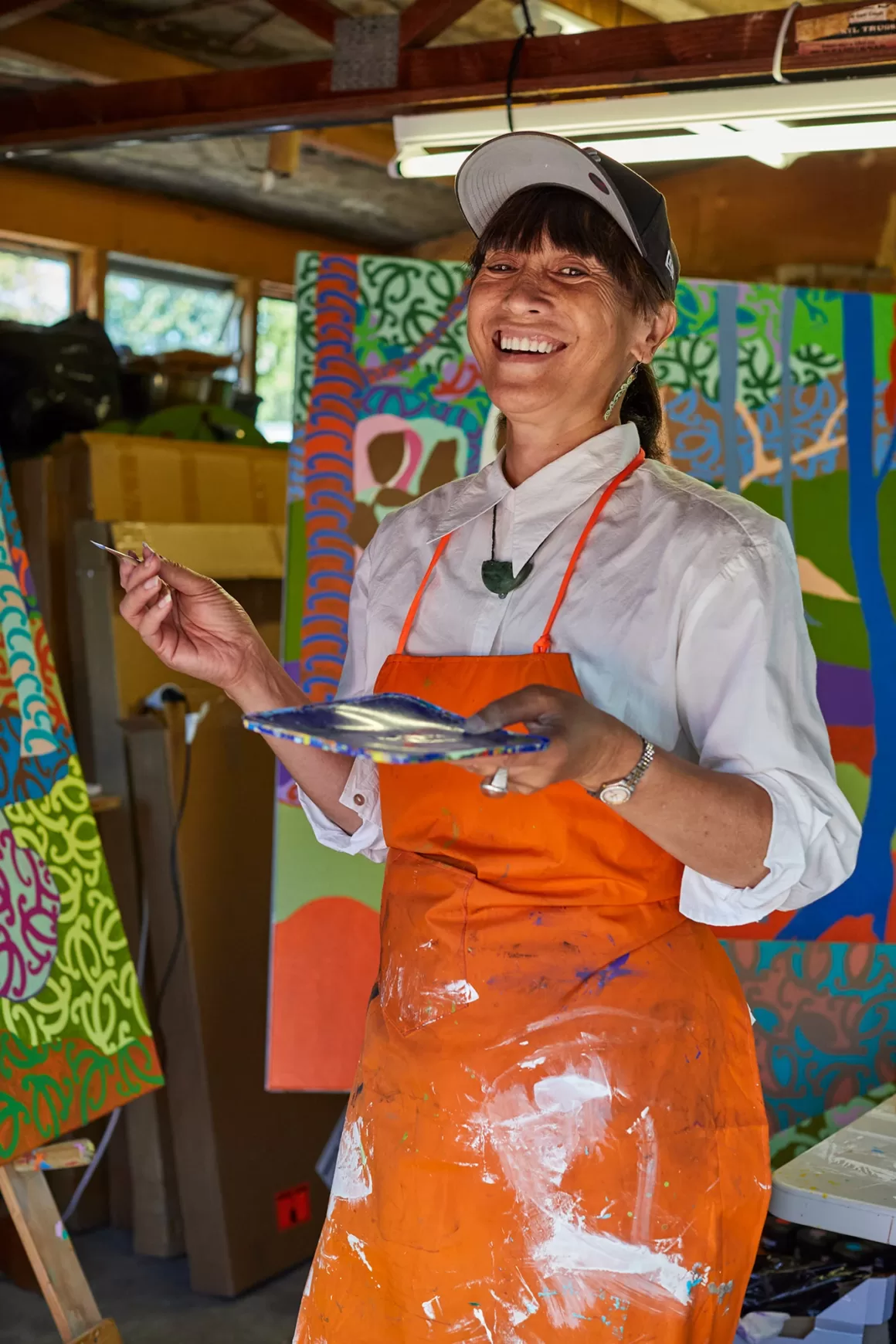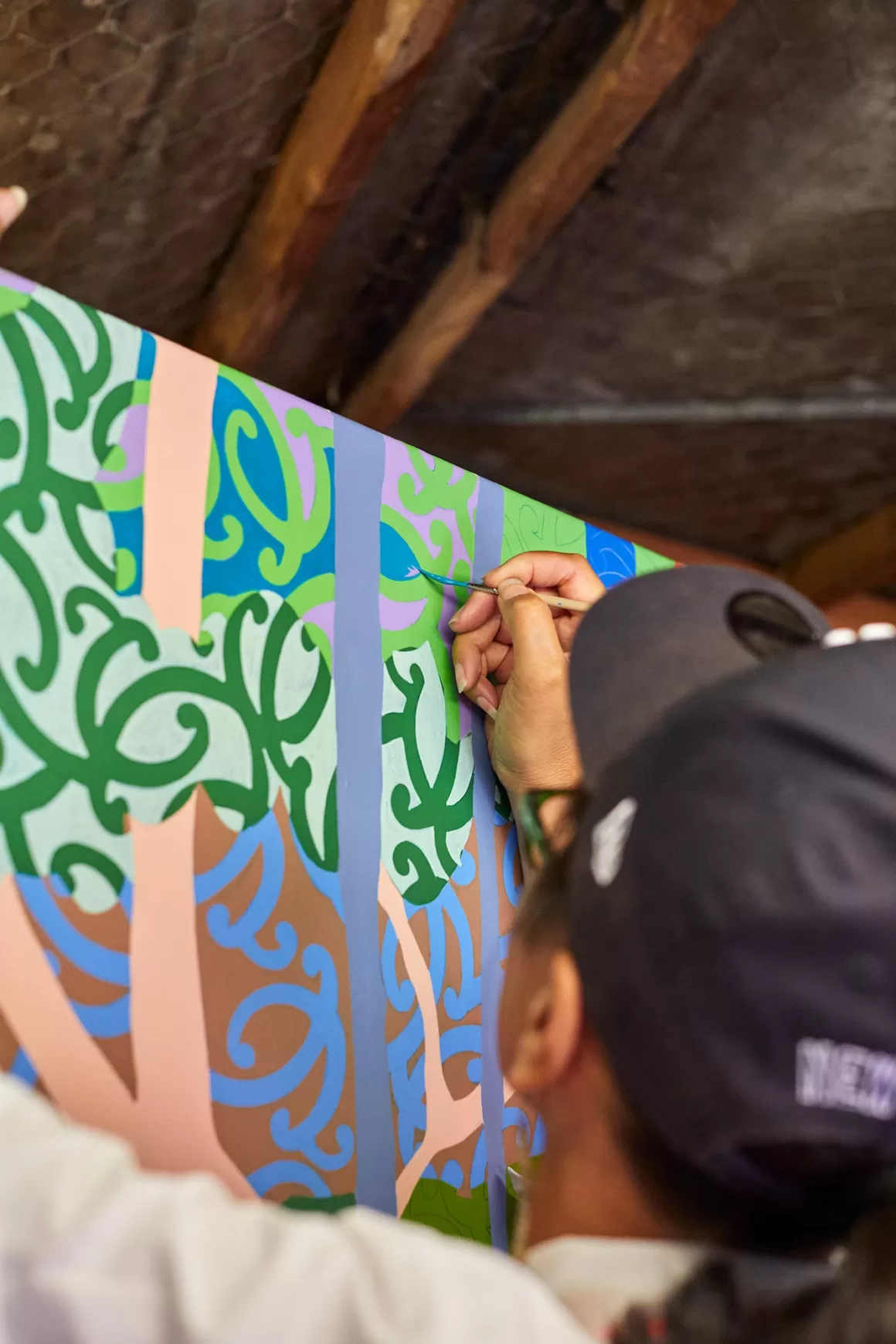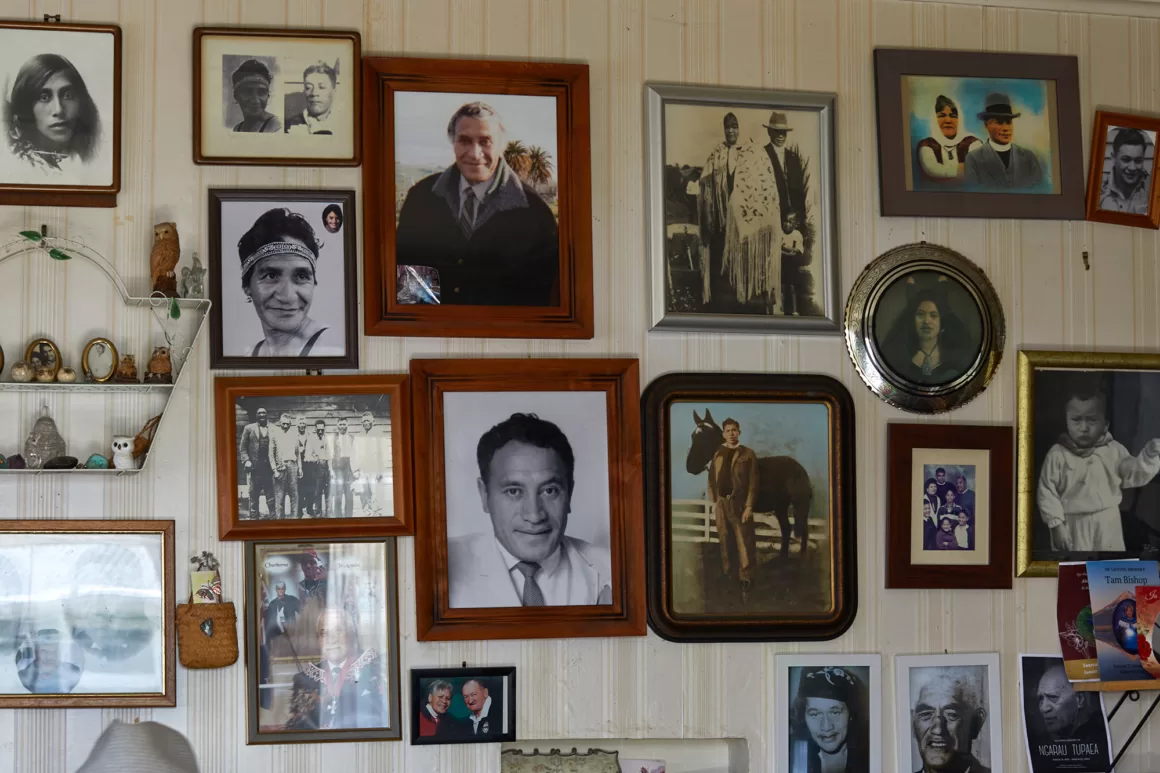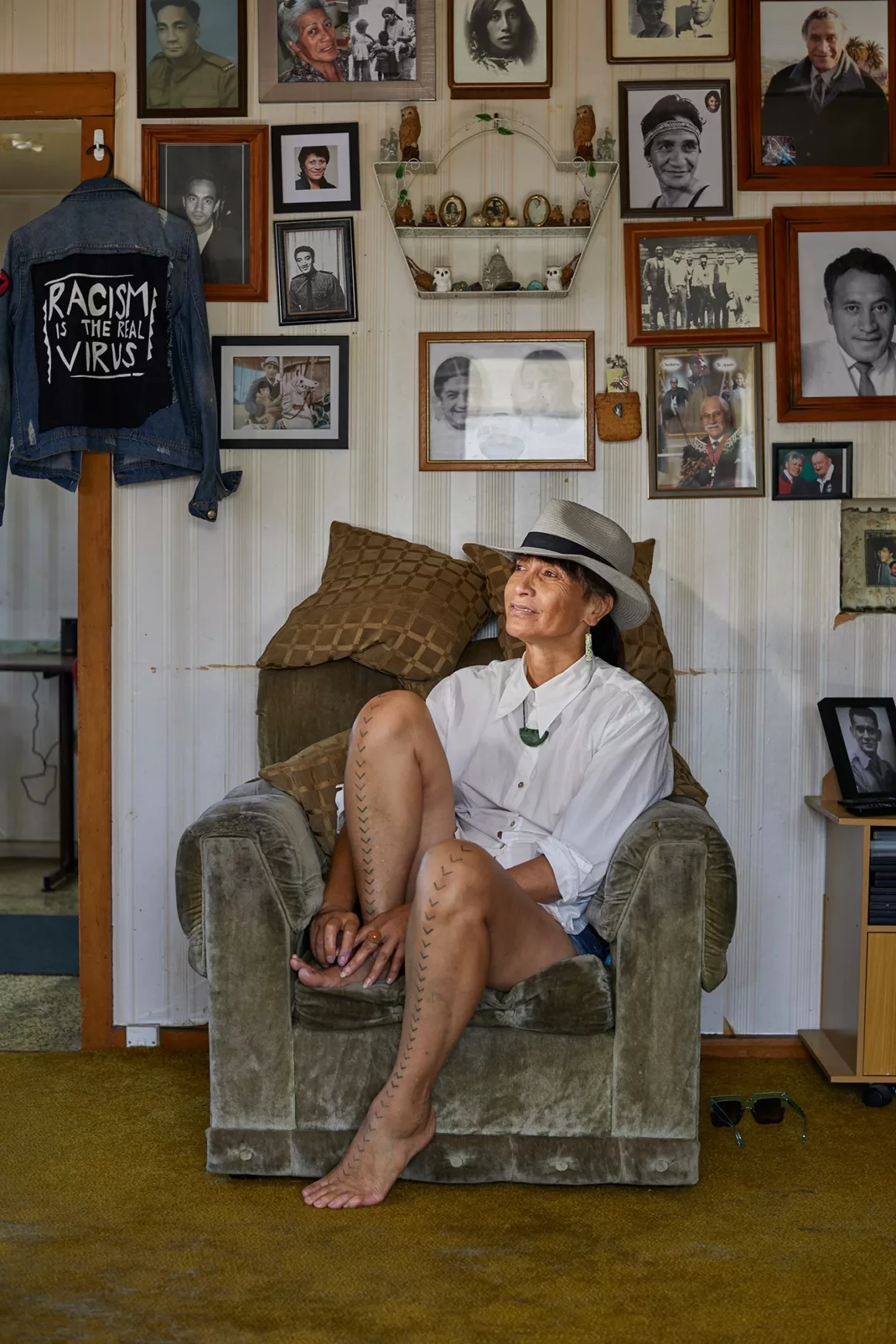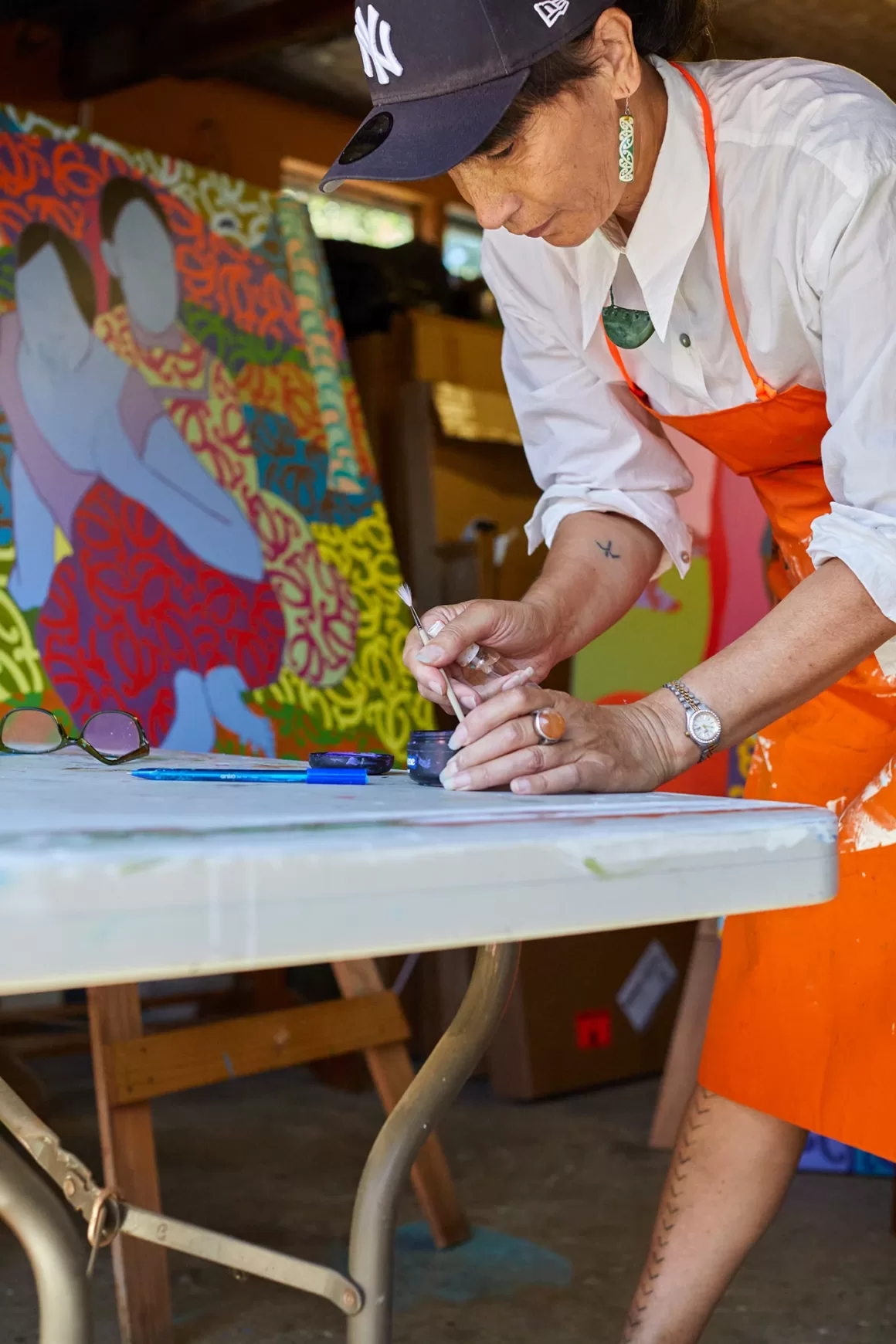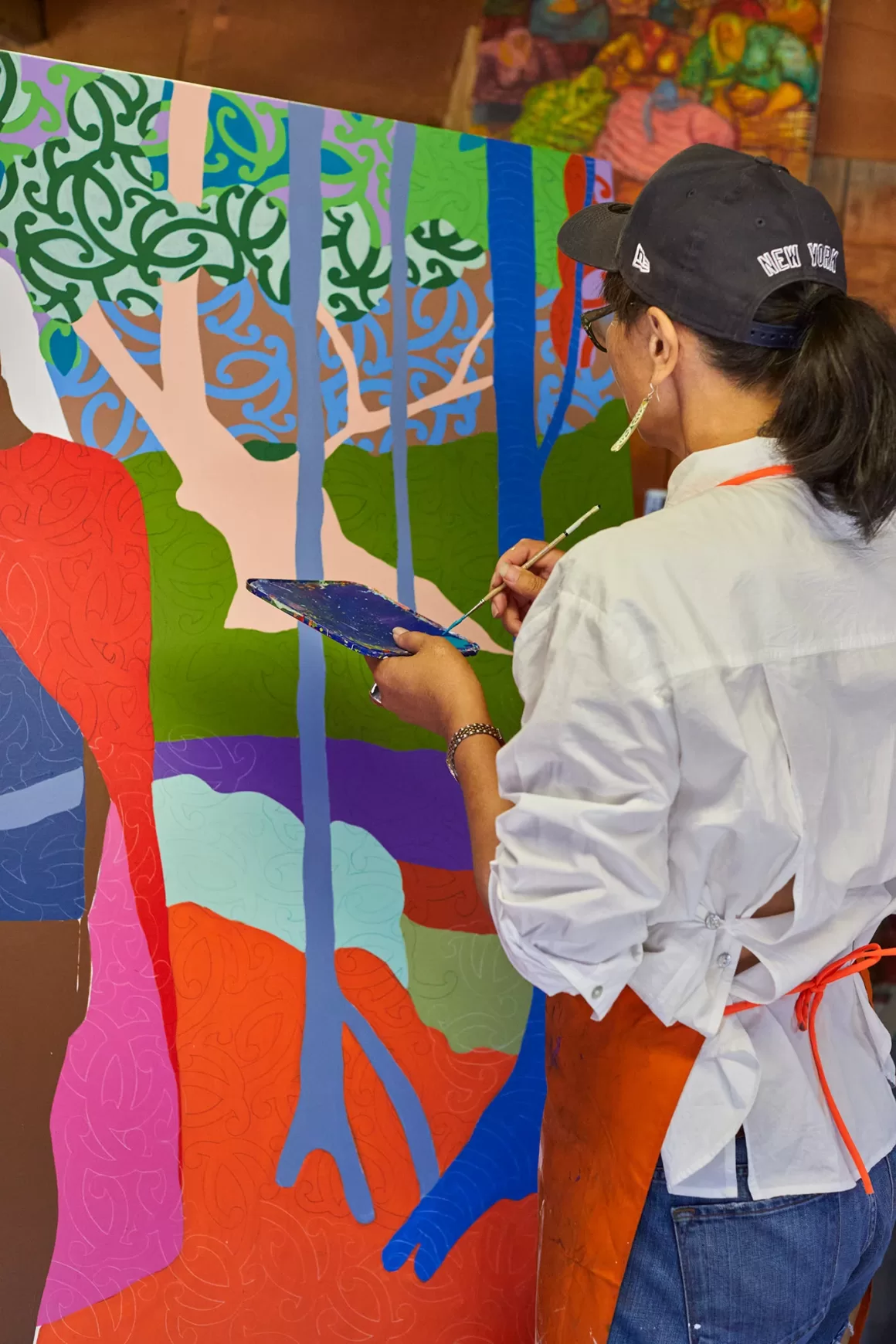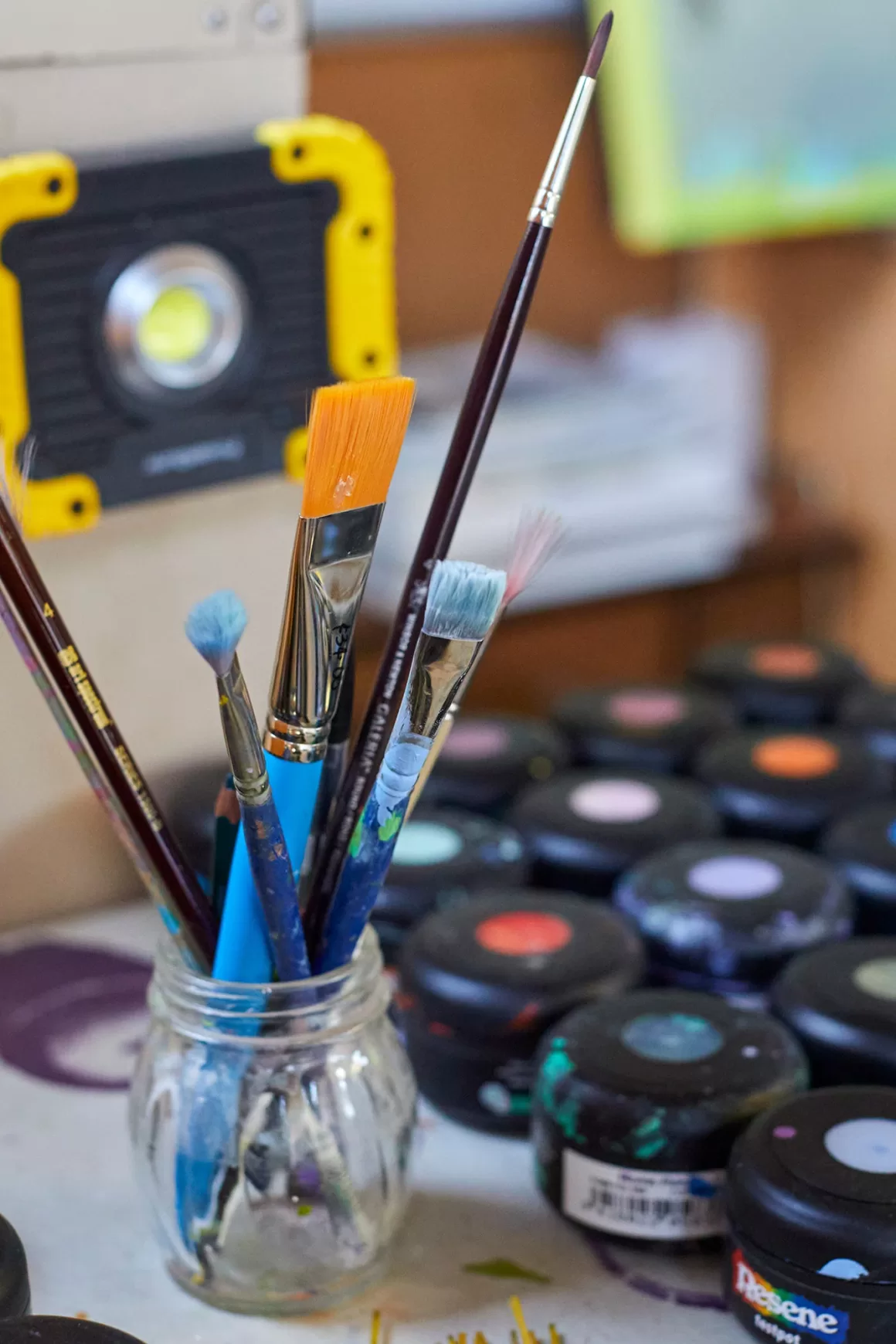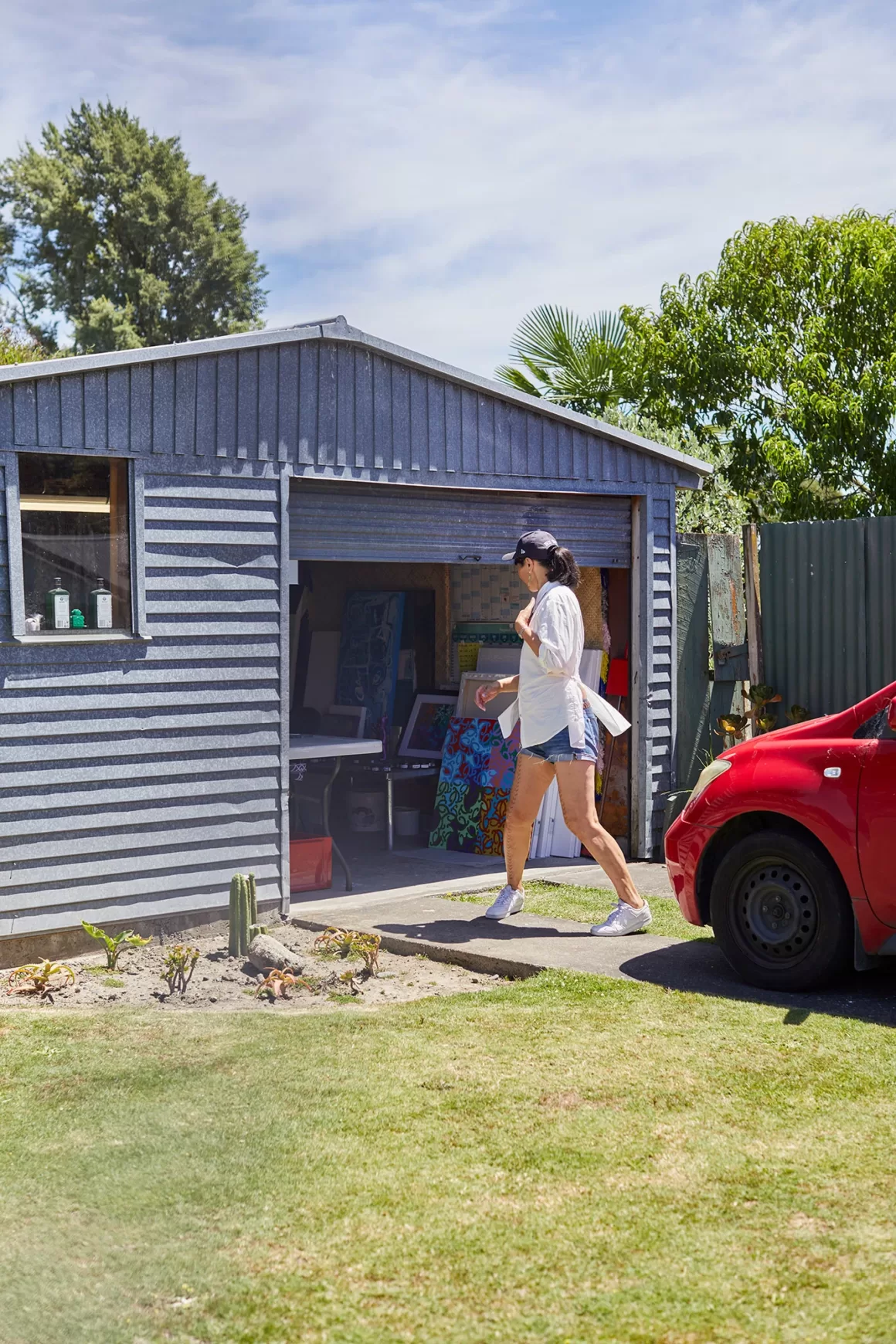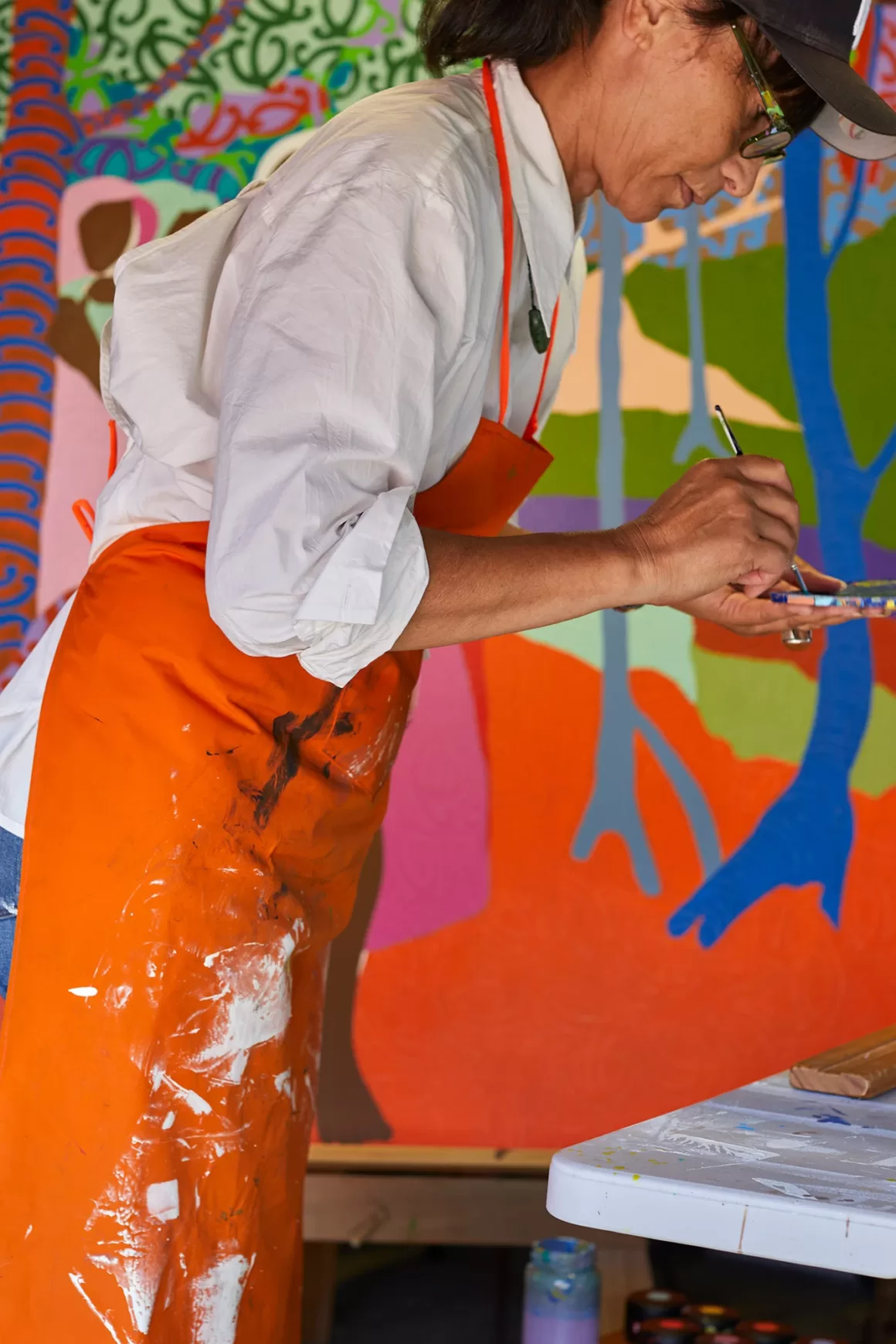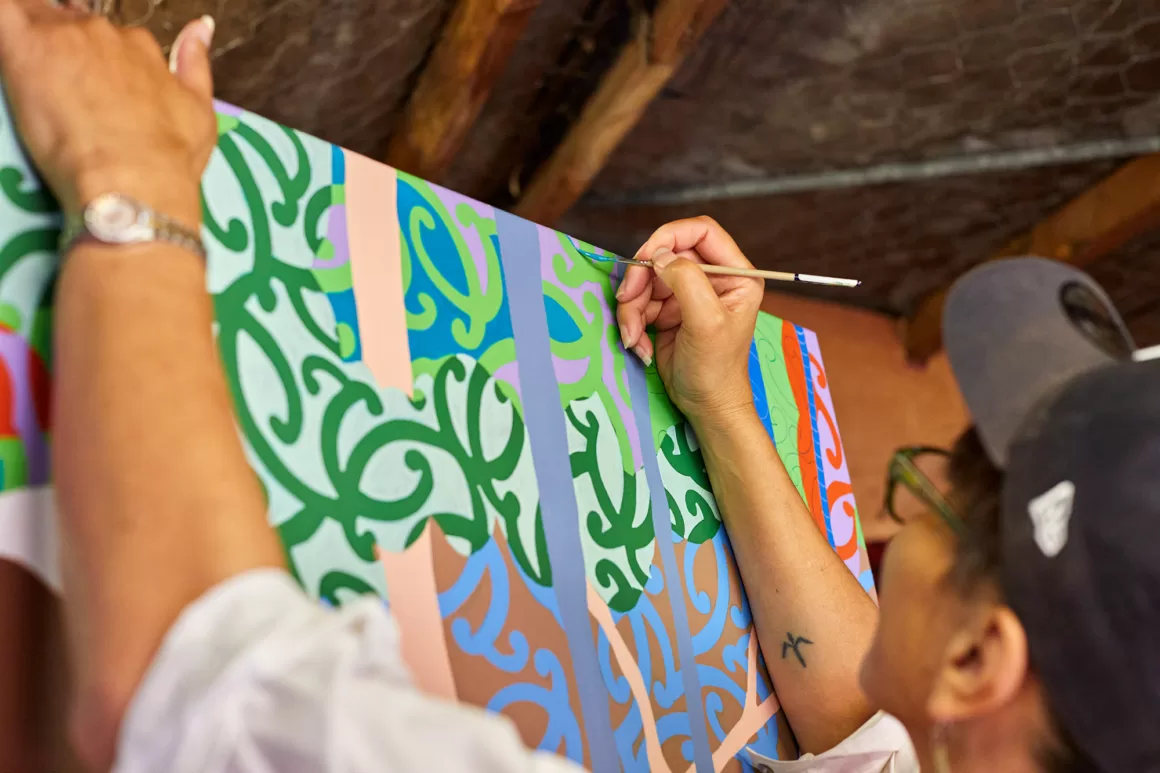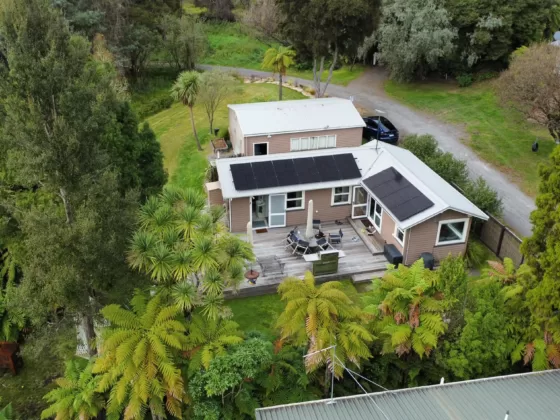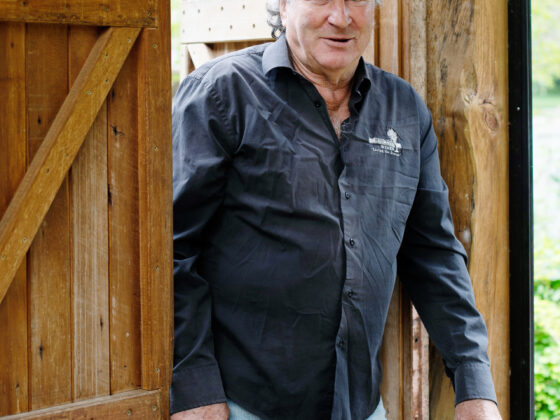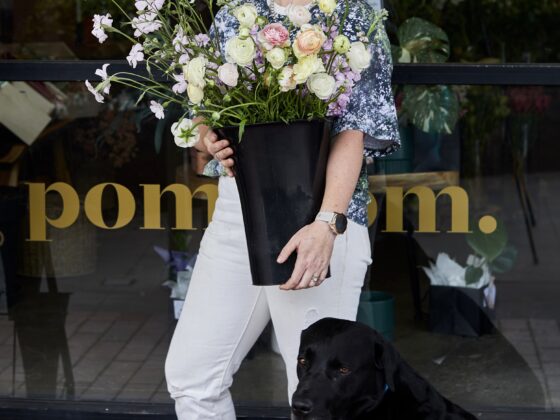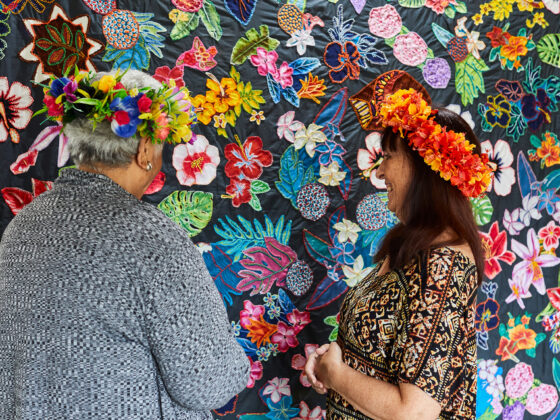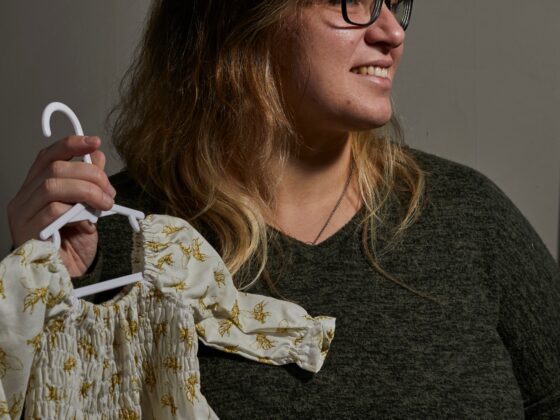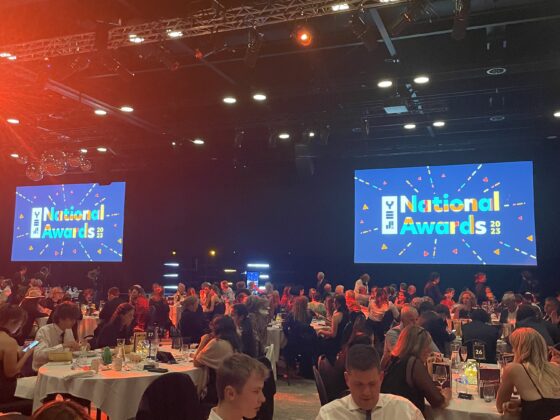The depth and breadth of creative talent in Hawke’s Bay never ceases to amaze. In this issue, Megan Seawright talks with contemporary Māori artist Nephi Tupaea (Ngāti Koata, Ngāti Tiipa, Ngāti Koroko Kahukura, Ngāti Kahungunu), whose vibrant pieces recall the works of the old masters, as she activates her whanau stories.
It is a bright blue sky day saturated with hot air hazing as I pull up into Nephi Tupaea’s driveway. Nephi calls out a welcome for me to join her. With a paint brush in hand, she sits with a relaxed elegance in her studio, the roller door open wide, leveraging air. Her friend and korowai weaver Arlita Hape is with us; immediately we are all laughing.

Our conversation starts with whānau and upbringing; after all, we’re seated in Nephi’s family home in Havelock North. Nephi tells me it was a great place to grow up as urban kids, with cousins and close friends all on the block. “We went to the same schools, the same church and marae, we were really always together.”
Nephi reflects, returning home to care for her mother is significant. “I understand my own trials and tribulations now. Thinking about my sexuality, who I was and my being a trans woman – there’s just no manual book to tell you who you are. What’s important is knowing I am relevant to who I am, and that comes from knowing and loving myself. Having self-belief means you become quite untouchable.”
Identity and creativity are strongly interwoven for Nephi. When I ask what art meant to her in her younger years, she says that she always knew she was creative.
Recalling an aviation movie and wings she was inspired to make, “It was the first step in seeing how my brain worked. It was the beginning of my awareness of my imagination, and love for sci-fi. I realised imagination could remove the physicality of things, things could just ‘exist’, so I started creating with objects and fabrics.”

In the late 1980s, Nephi moved to Auckland where she met fashion-conscious artists and musicians. As there was no CreativeNZ/Communities funding to draw on, it was all self-built.
“I happened to be at the right place at the right time. I met Suzanne Tamaki and Selena (Forsyth) Haami. I was so free spirited, I’d throw the stardust, ‘kei te pai, everything would be ok’ I’d say. Making costumes, designing jewellery, and sewing for Selena, she’d say ‘help yourself’. So I made a collection of jewellery – that was the start.”

The artist collective Pacific Sisters formed in 1992. They knew their work would bring change. Over the years their influence has challenged many cultural and political status quos, changing access and representation through creative platforms.

“Our doors were wide open to fabulous, extraordinary artists of like-mindedness, urban Māori and Pasifika women, Fa‘fafine and men. We were quite political, thinking about how to manoeuvre our own way.”
Through the 2000s Nephi lived in Australia, until in 2018 her mother requested she come home. “This was the best thing for me. It was emotional seeing all the old people, my tipuna on the death wall – what an impact.” Her response was to create – transforming a bag of orange string into a garment, a korowai.

In a precious breath of welcome He Tapu Tinana was born, consolidating her homecoming, and was first exhibited with Pacific Sisters’ second iteration of He Toi Tāera – Fashion Activists exhibition at Auckland Art Gallery Toi o Tāmaki, 2019. For Nephi, He Tapu Tinana was also the final stitching of the Pacific Sisters back together.

“The sisters had been trying to get me home, and this work is the returning of the lost sister. Returning was like rebirthing, bringing the body back.”
It has been a productive time since for Nephi. Through her bachelor studies, Maunga Kura Toi, at Toimairangi (Te Wānanga o Aotearoa), she extended into painting, and reconnected with her te ao Māori, experiencing wonder and humility.

Through painting, Nephi learned kōwhaiwhai – patterning, connecting her with ko mangōpare, the hammerhead shark. We see this pattern repeated across all her paintings. “It’s one pattern that has resurrected me in my painting work and my wairua and tinana, it always aligns me back to who I am.”
Nephi exhibits regularly throughout Aotearoa and locally. Her paintings are specifically themed with symbolic activations. She works with a process founded through community and the origins of her whakapapa.
“I’m telling my stories, my mother, the whenua, indigenous Māori transgender woman. I have long conversations and karakia with my tipuna (ancestors), it speaks on my canvas. The story always reveals itself.”
It is a focused relationship, and presently has links to wider concepts in art making such as strong appreciation for old masters’ forms, like Gauguin, conveyed through the conscious and active use of appropriation and repositioning. “Looking at another artist’s work matters. I associate the new themes of my work through the initial impulses of appropriation and what I see coming from it, then my own themes come forth.”

Within indigenous art making, there is a strong foundation for reclaiming identity – changing the lens of view from a colonial–eurocentric perspective to one speaking and acting from your direct line of origin. This is a holistic shift in cultural sovereignty – tino rangatiratanga, so to stand and make decisions through your own cultural authority.
“The paintings are the stories my ancestors have walked. They talk about the injustices of all indigenous peoples. In a way, the bold colours I use sugarcoat these themes. They lure the audience in; it softens the blow of the actual story. The opening offers a space for appreciating and acknowledging these injustices. I like to think I am reclaiming our stories with a brightness. In a positive way, the colour represents its shine.”

There is no mistaking this presence of ‘shine’ in every painting. Nephi is honest about her use of ‘new colours’ as a contemporary Māori artist. She notes it is impossible not to be influenced by new materials and colour spectrums, because they’re part of our everyday environment. These things are in the trends of what we wear, or in the neon colours of a sunset; they present in our smiles and our manaakitanga of each other. It is a beautiful way to belong in the world.
Upcoming exhibitions
Tim Melville: Solo exhibition 3 July 2024
City Art Gallery, Hastings, 25 July 2024: Gwen Malden – Te Matau a Māui Contemporary Art Commission inaugural exhibition

